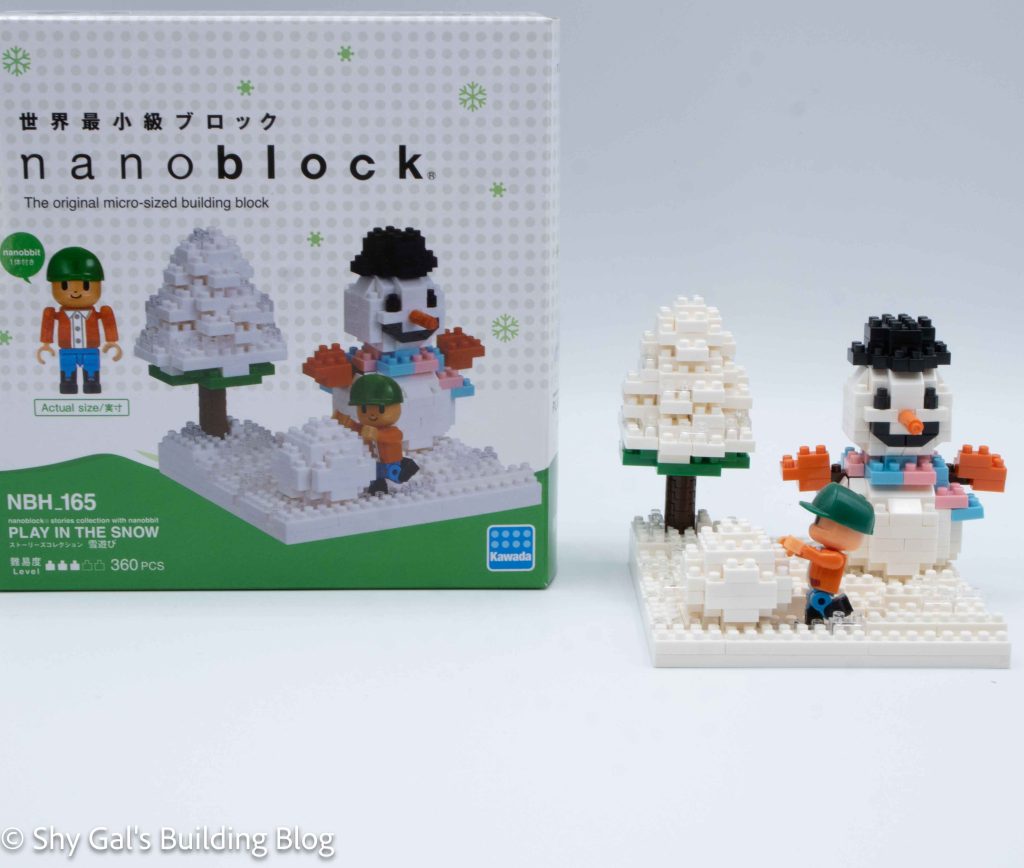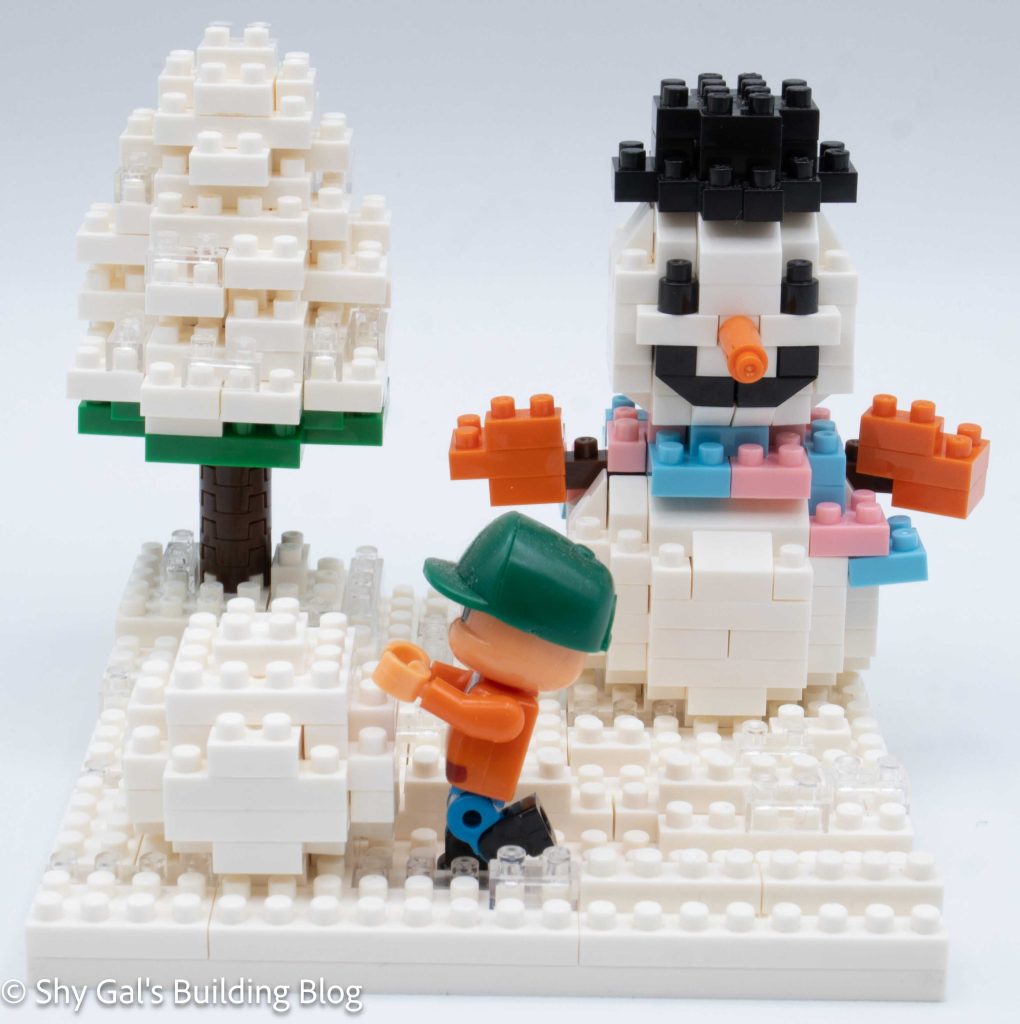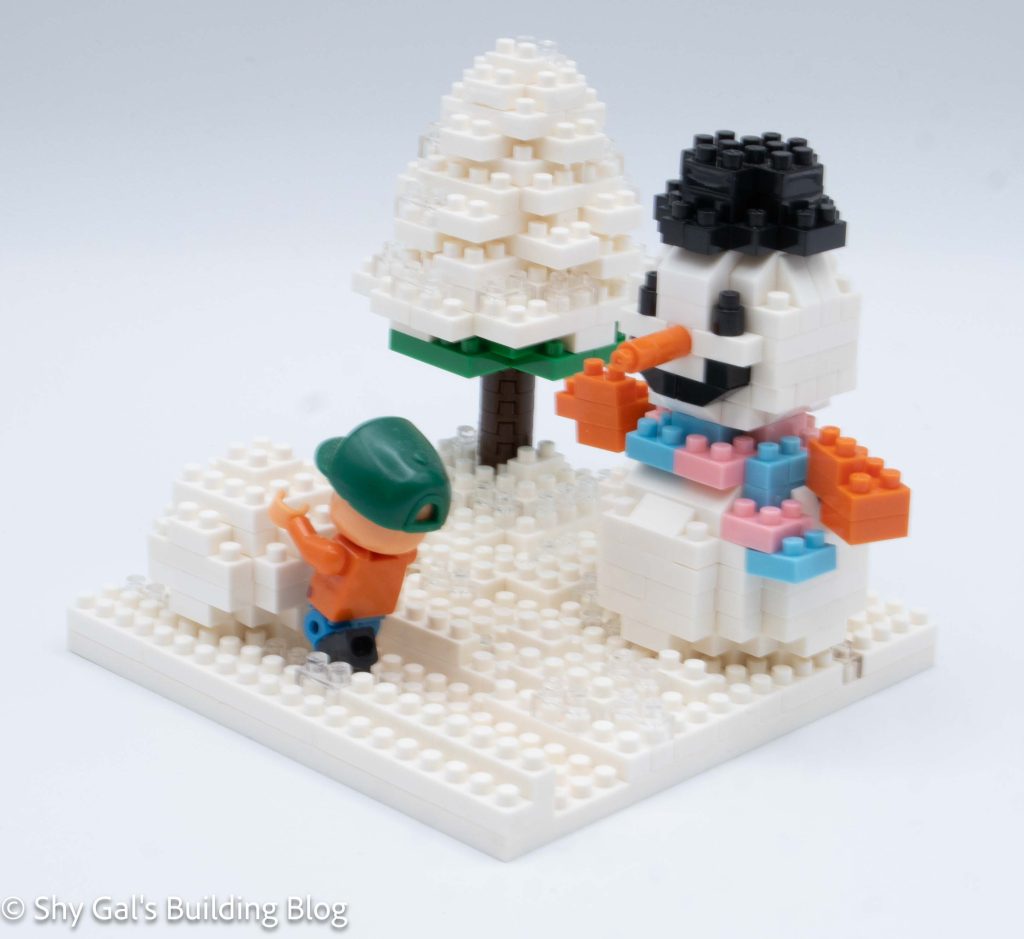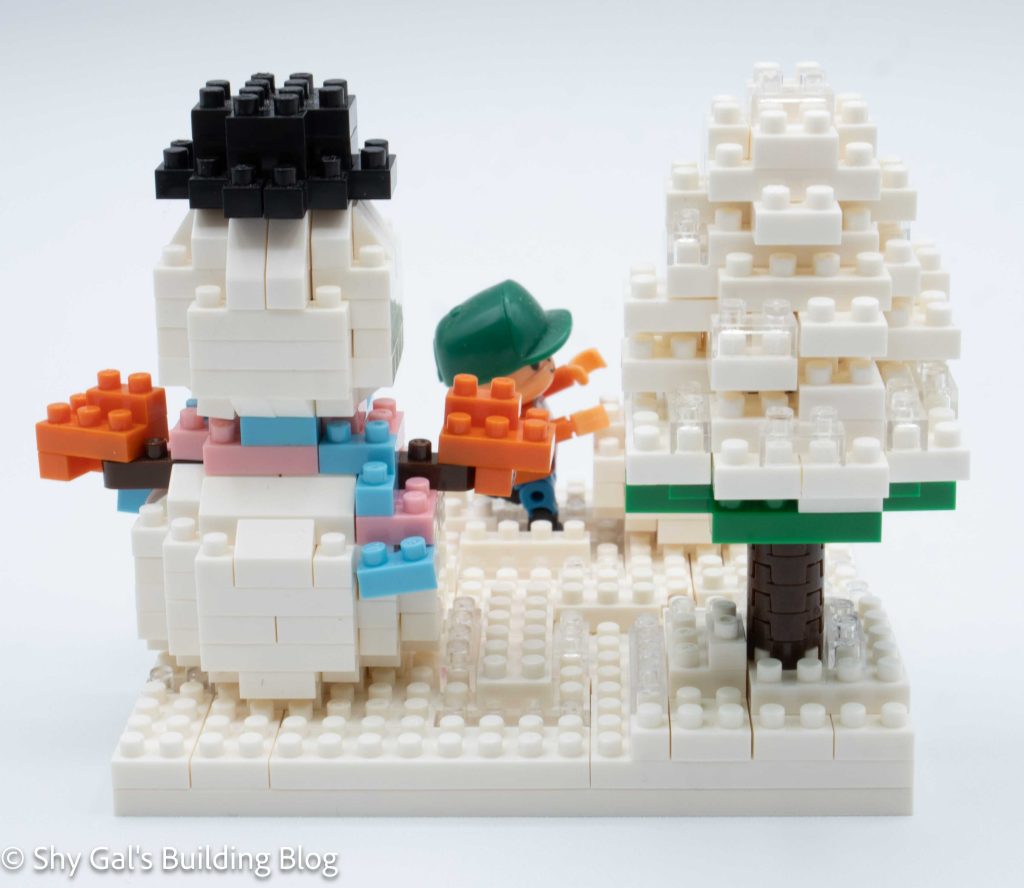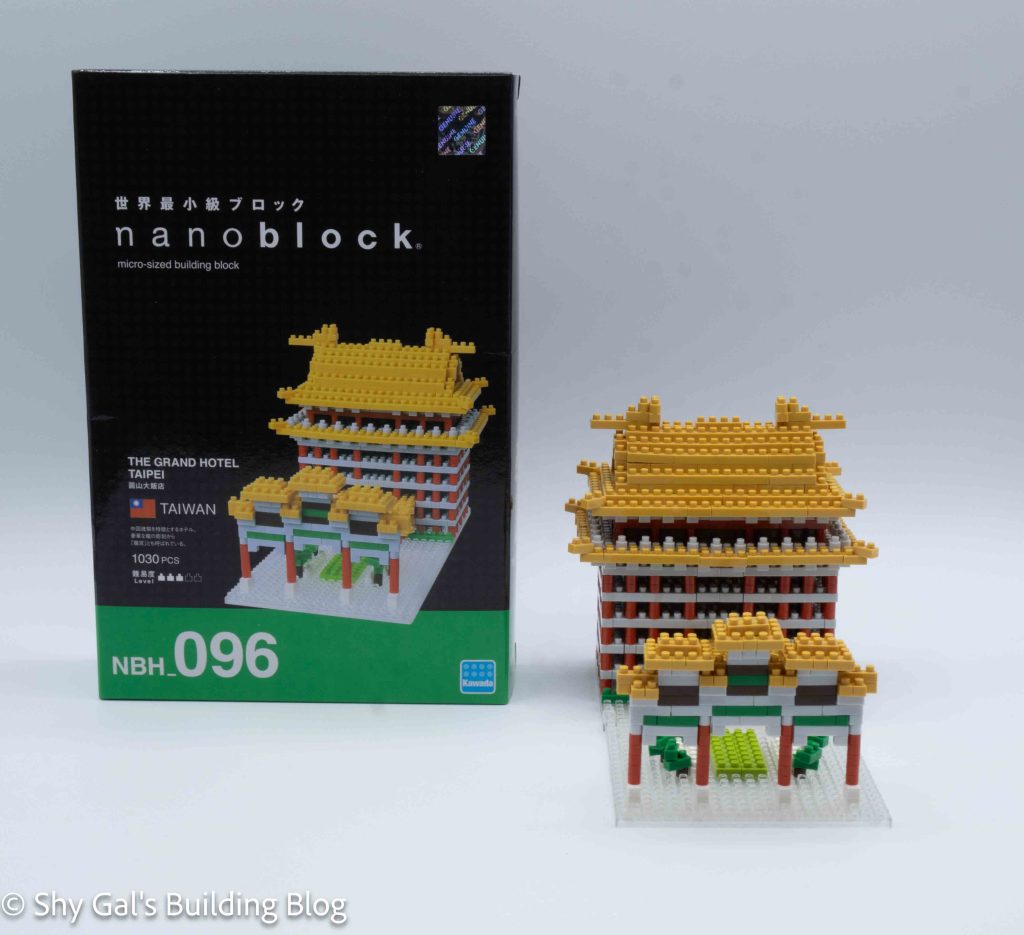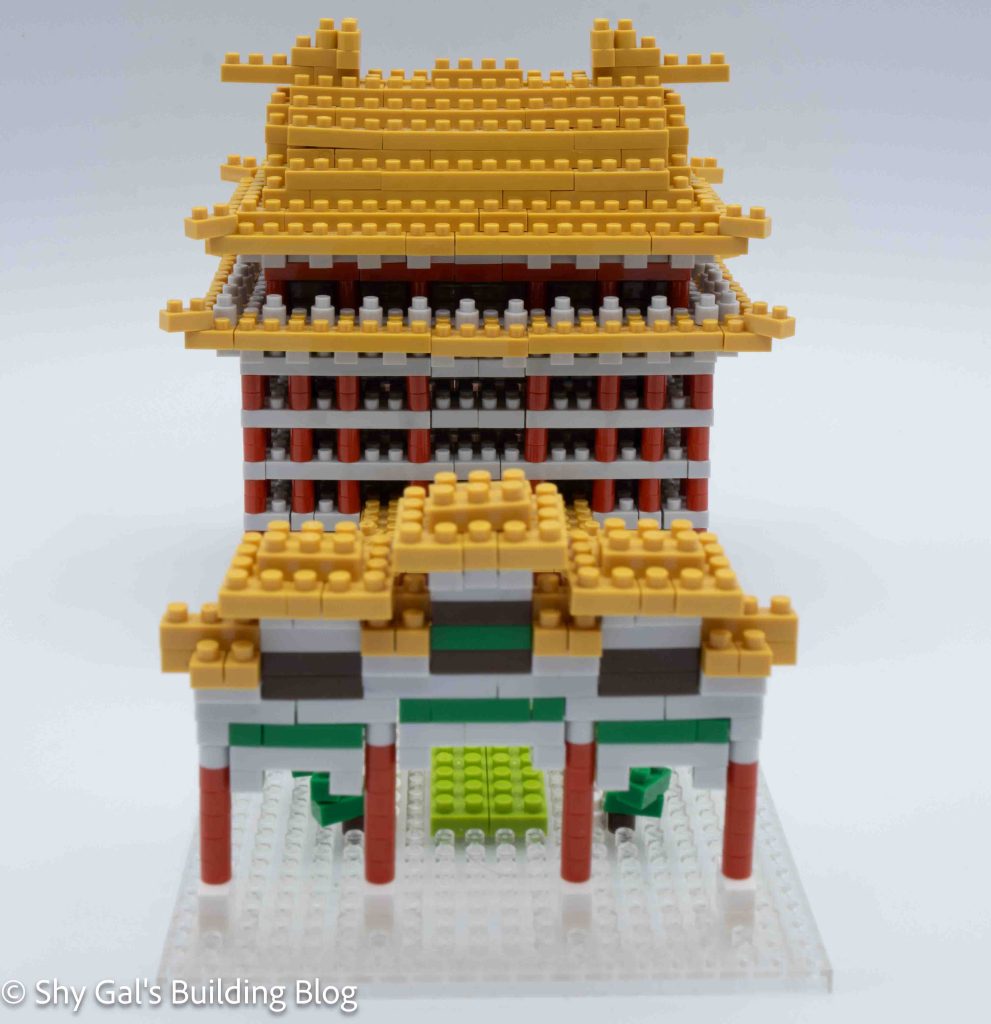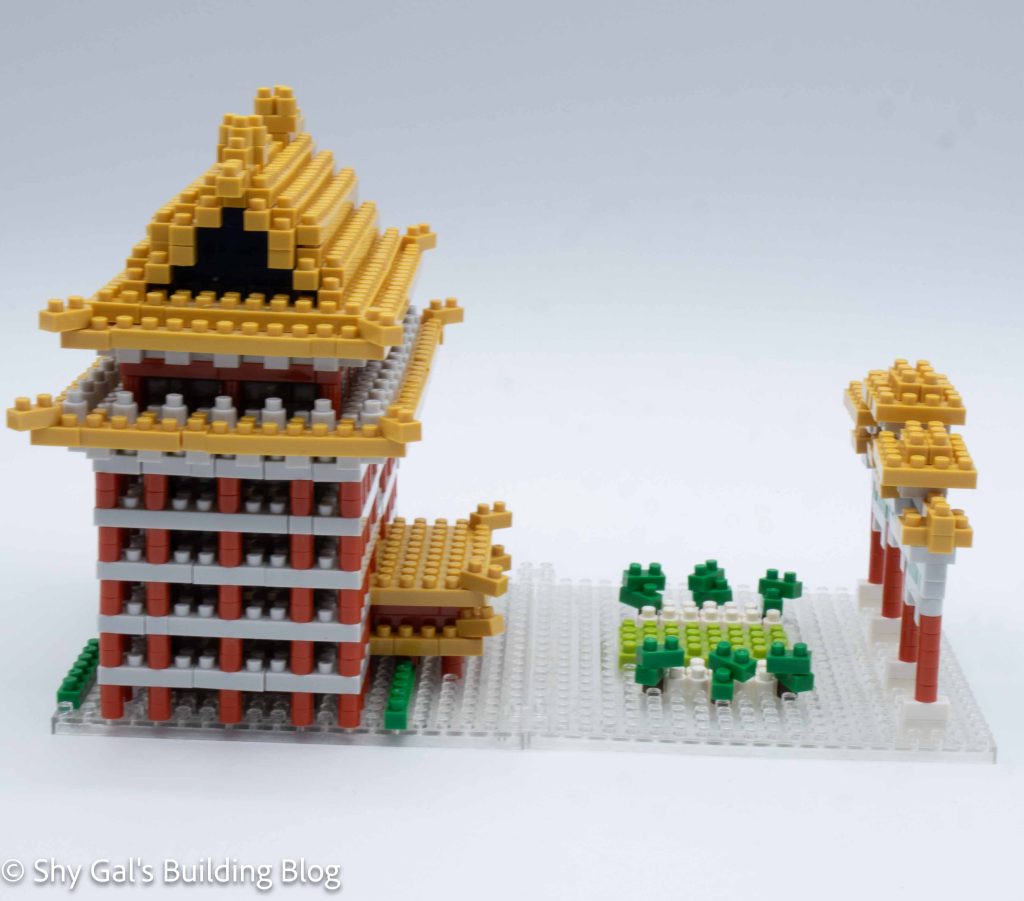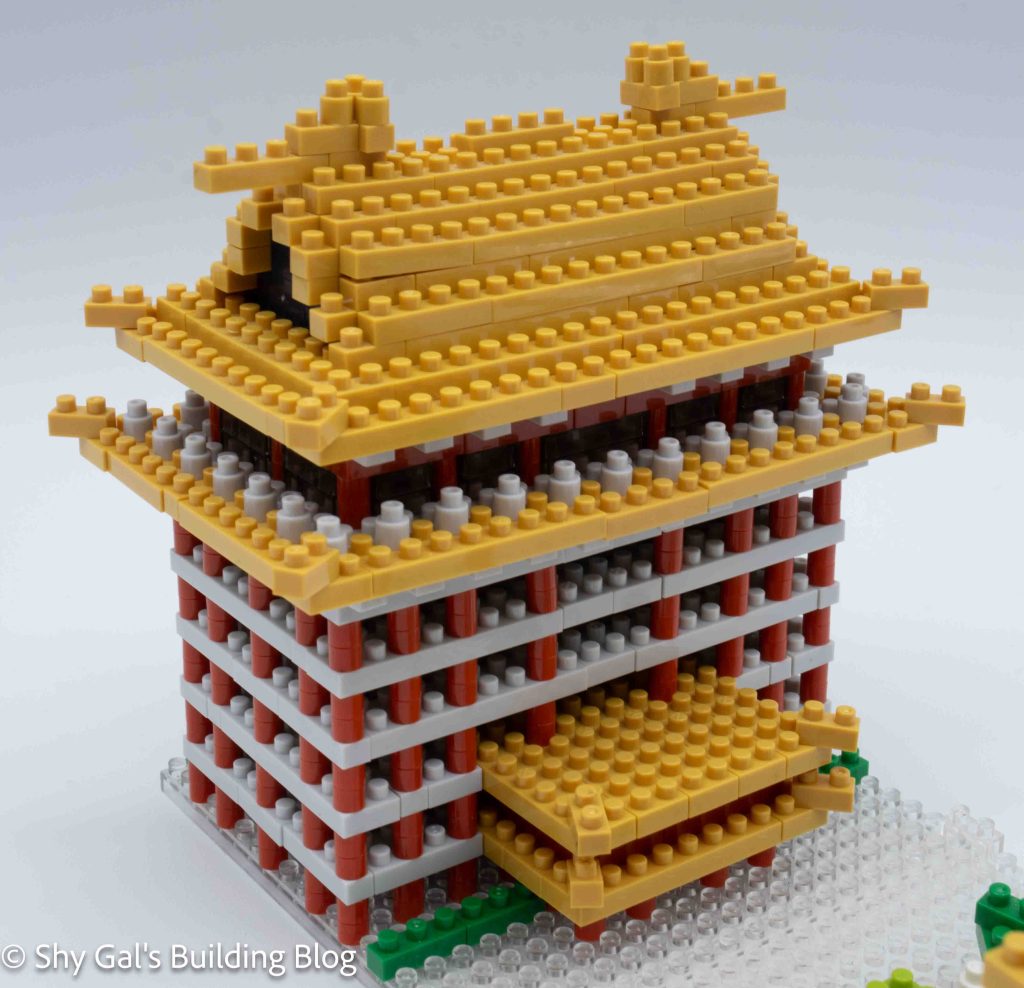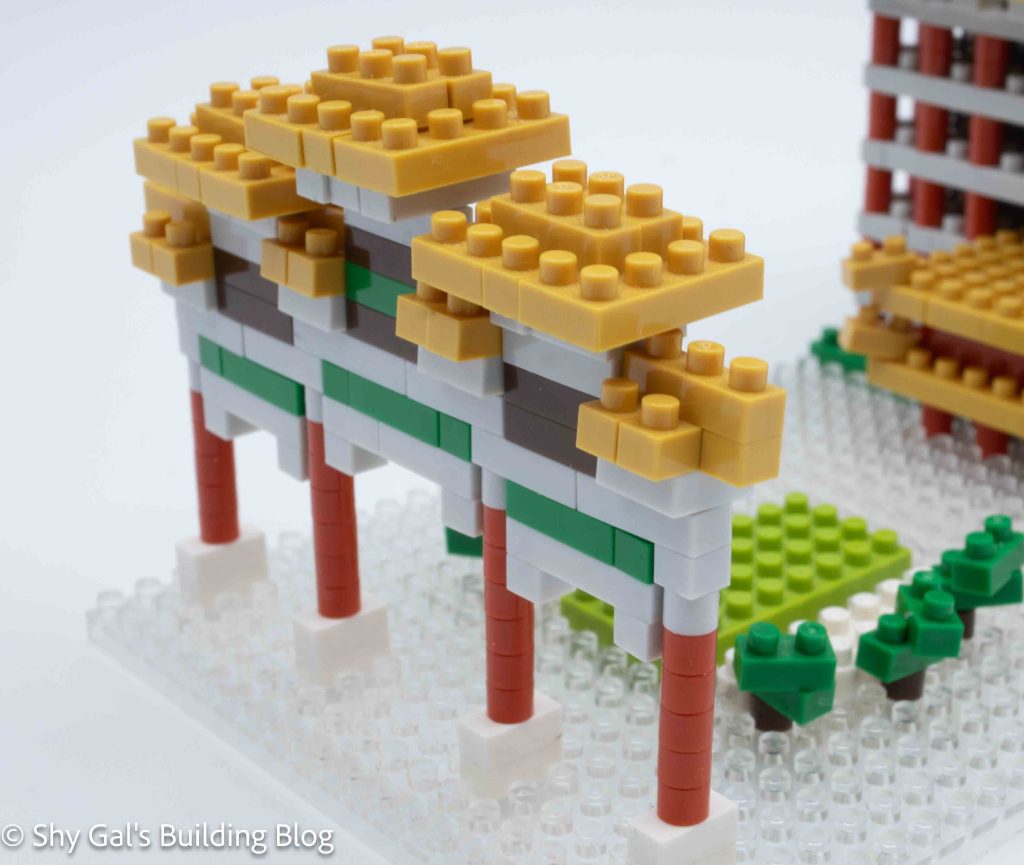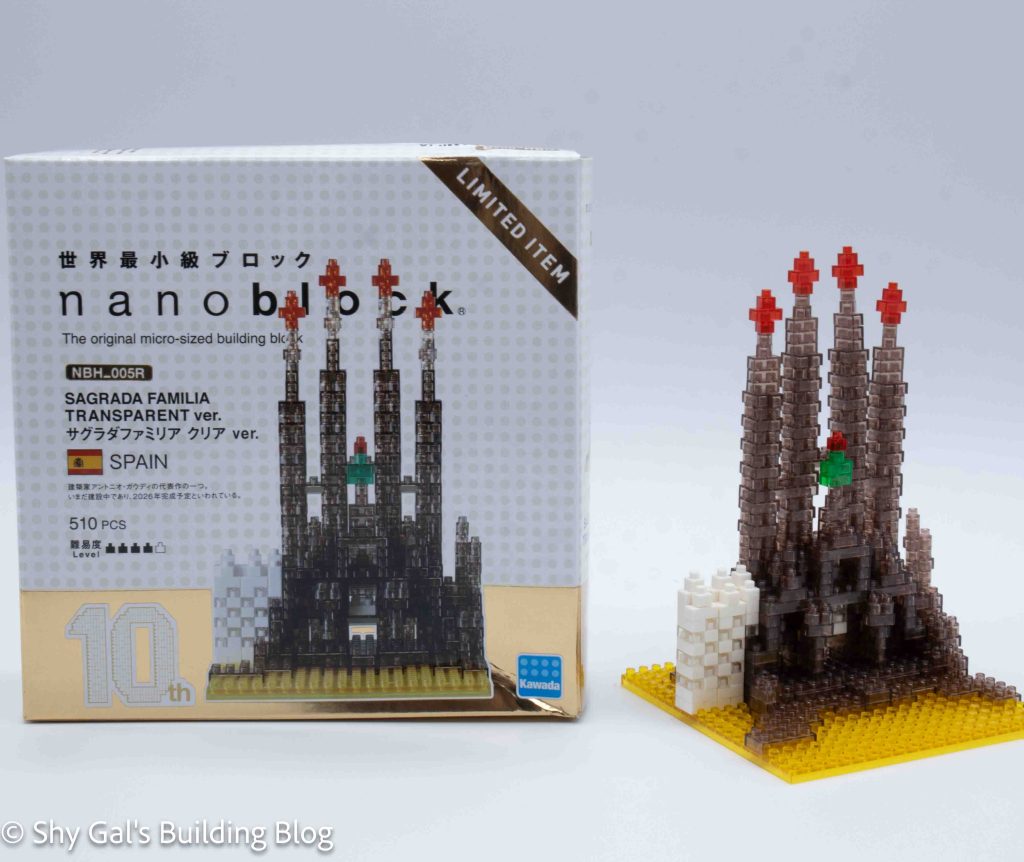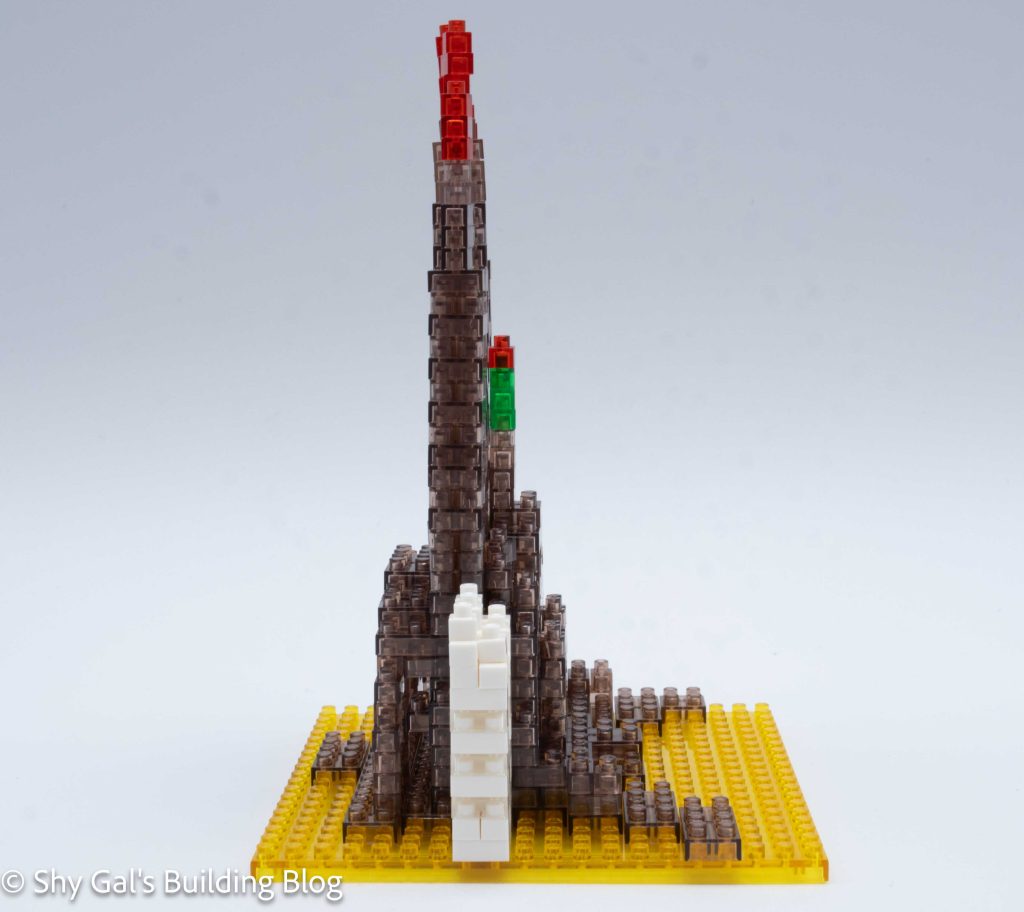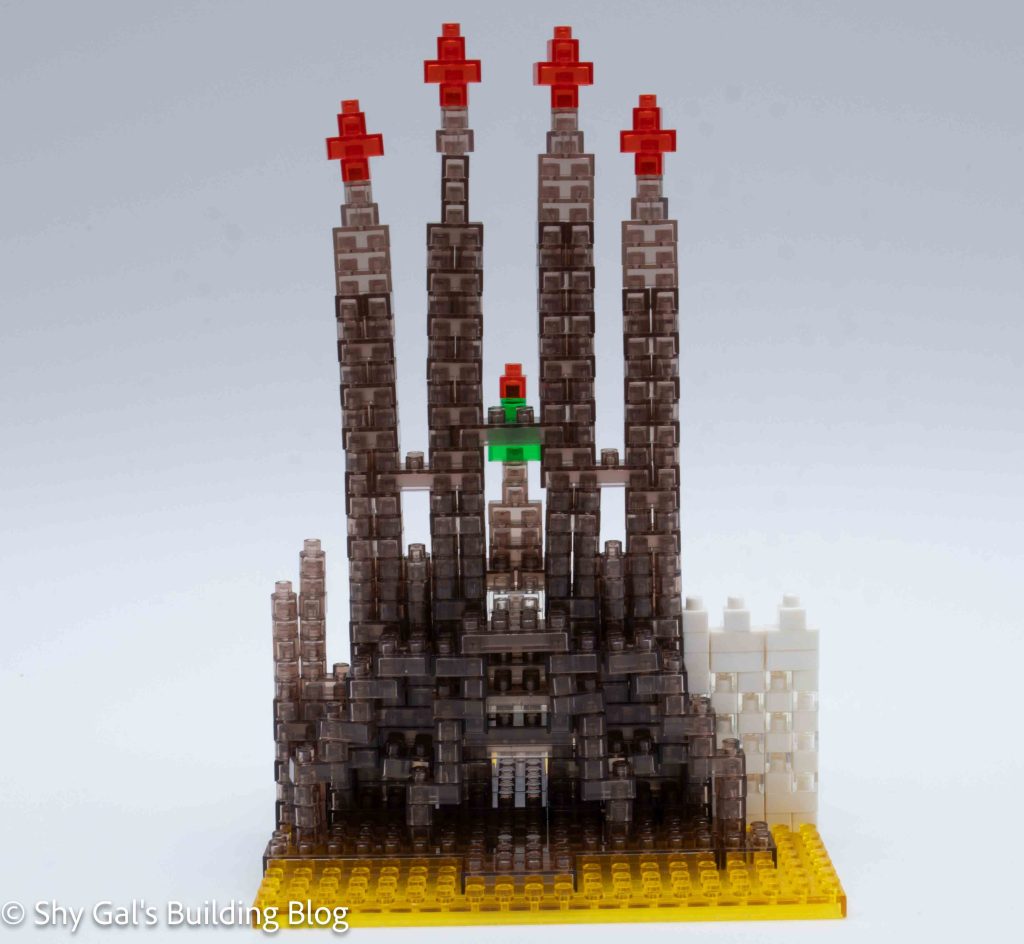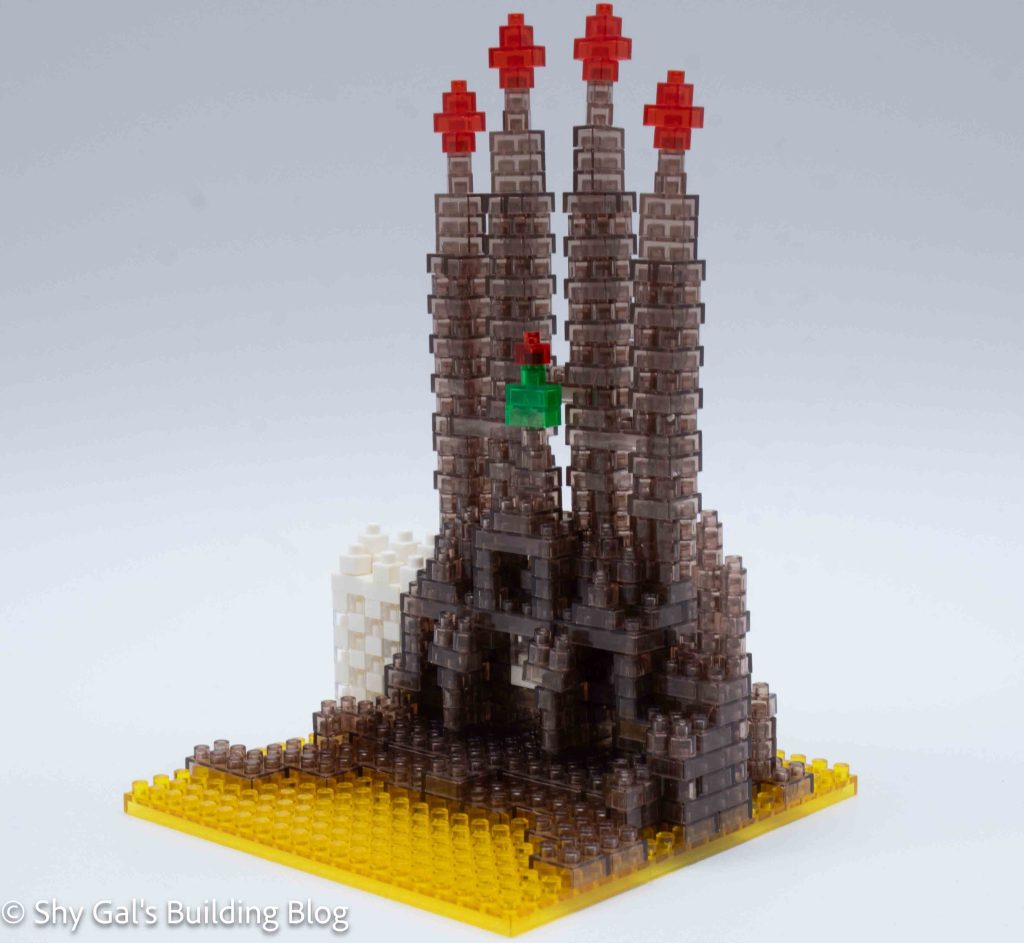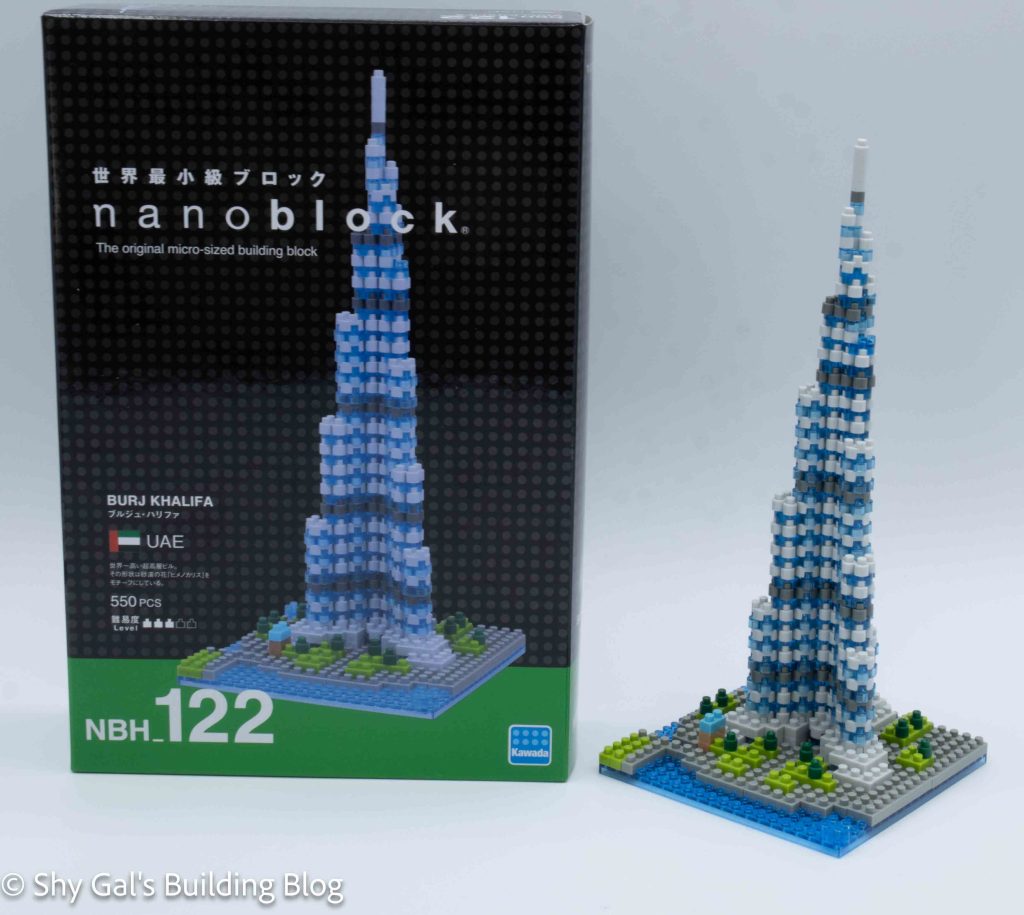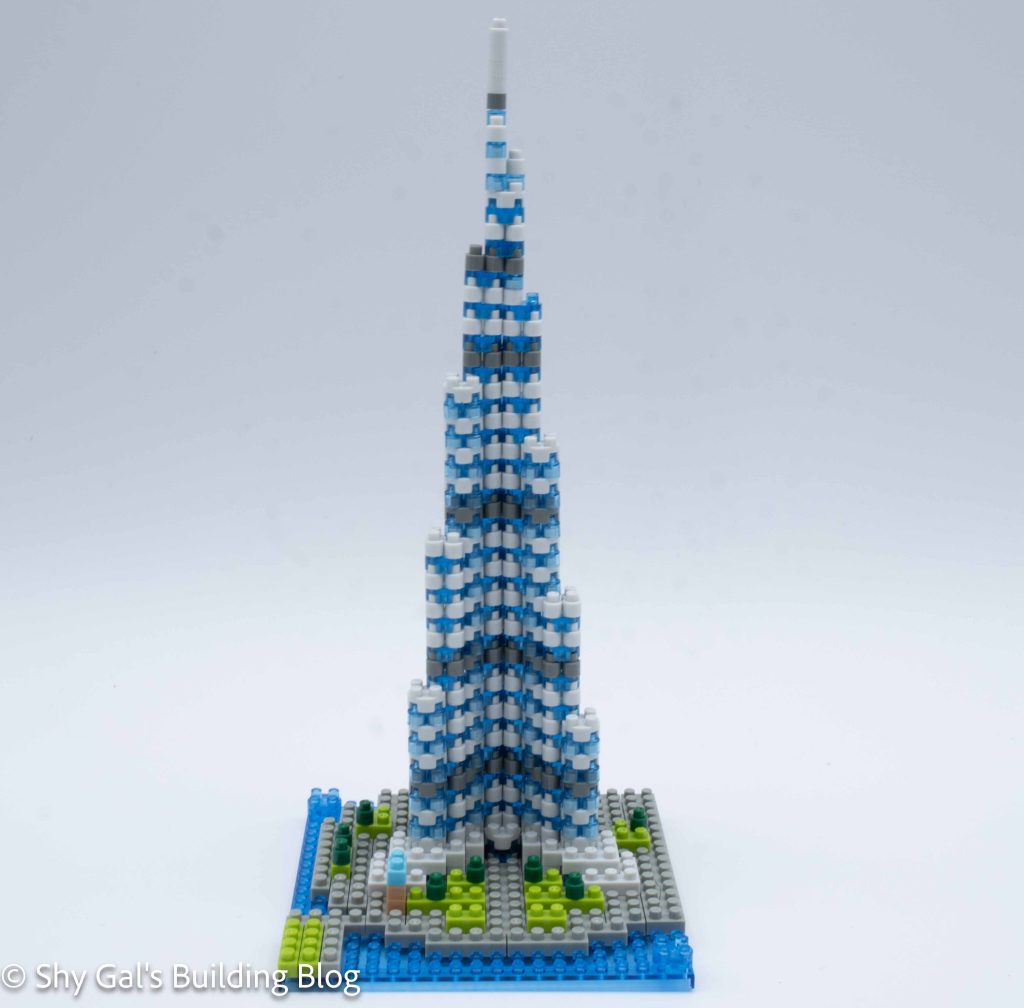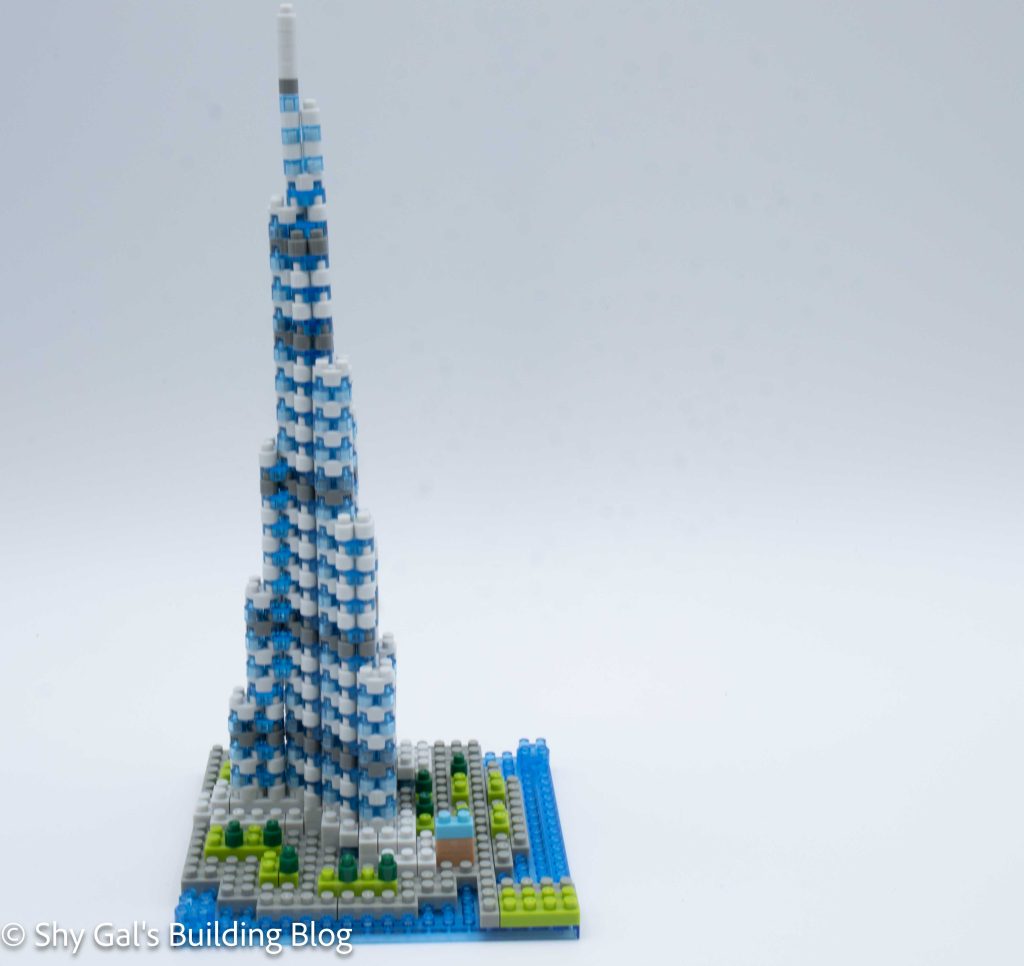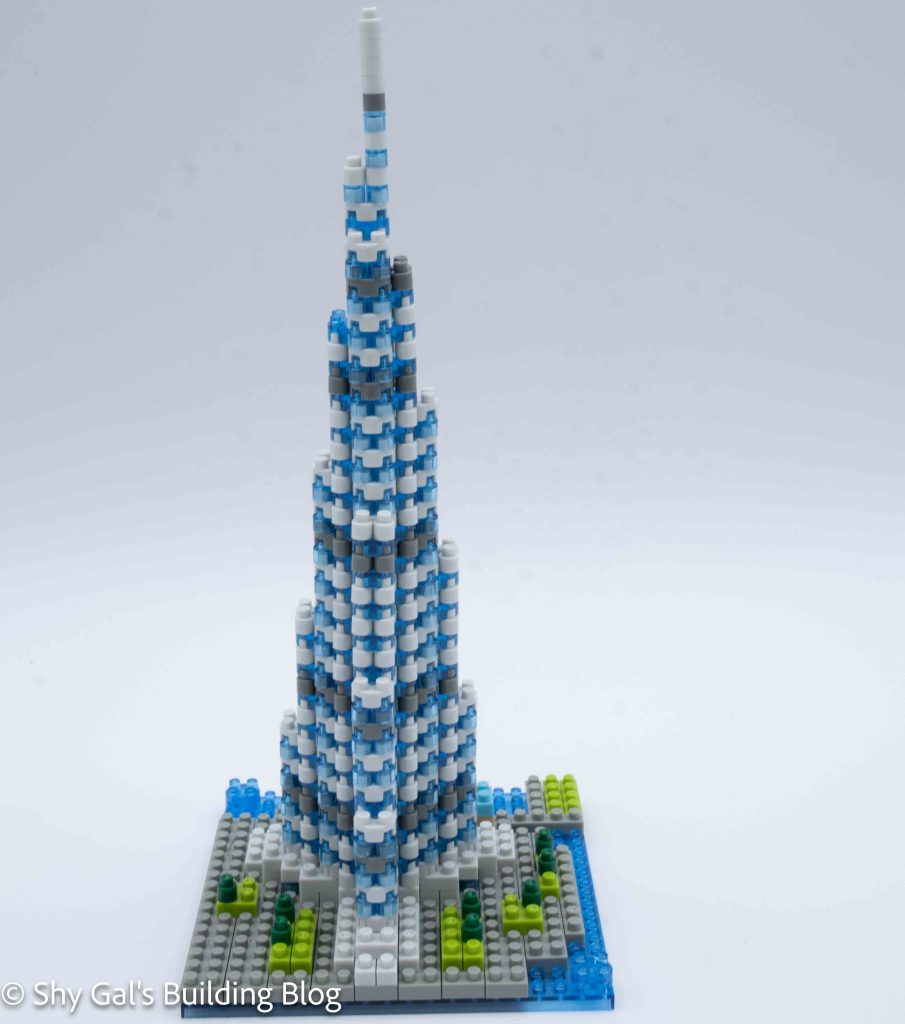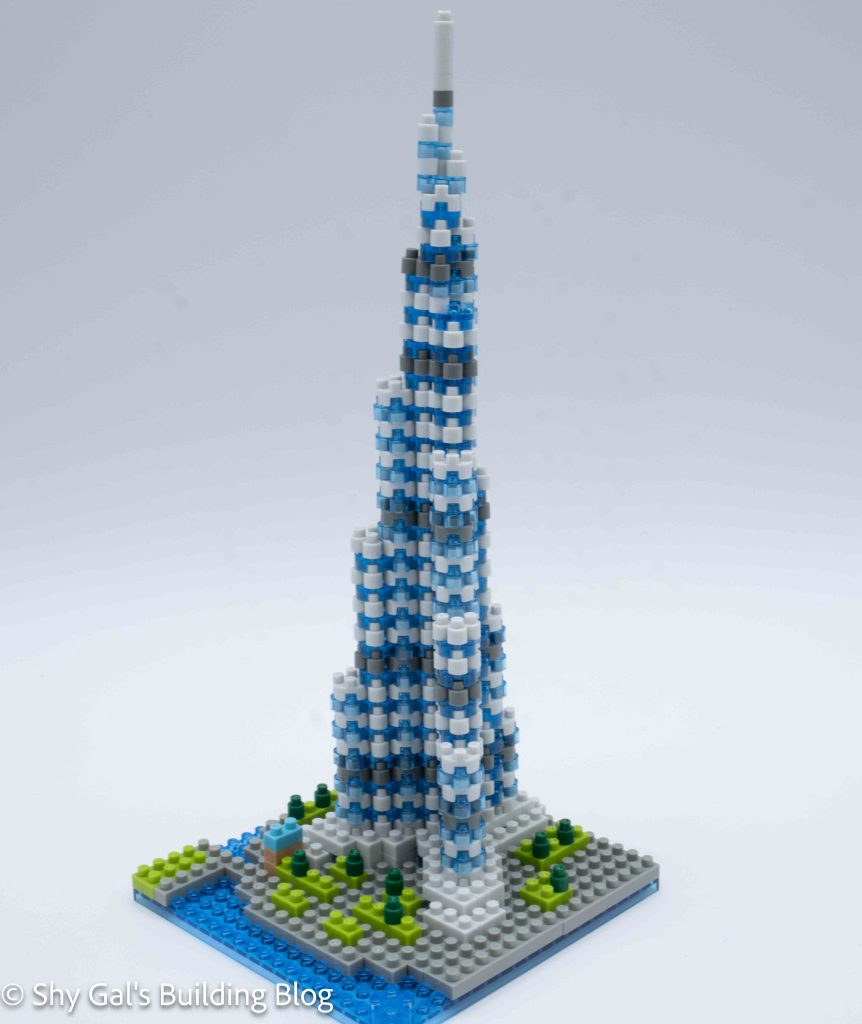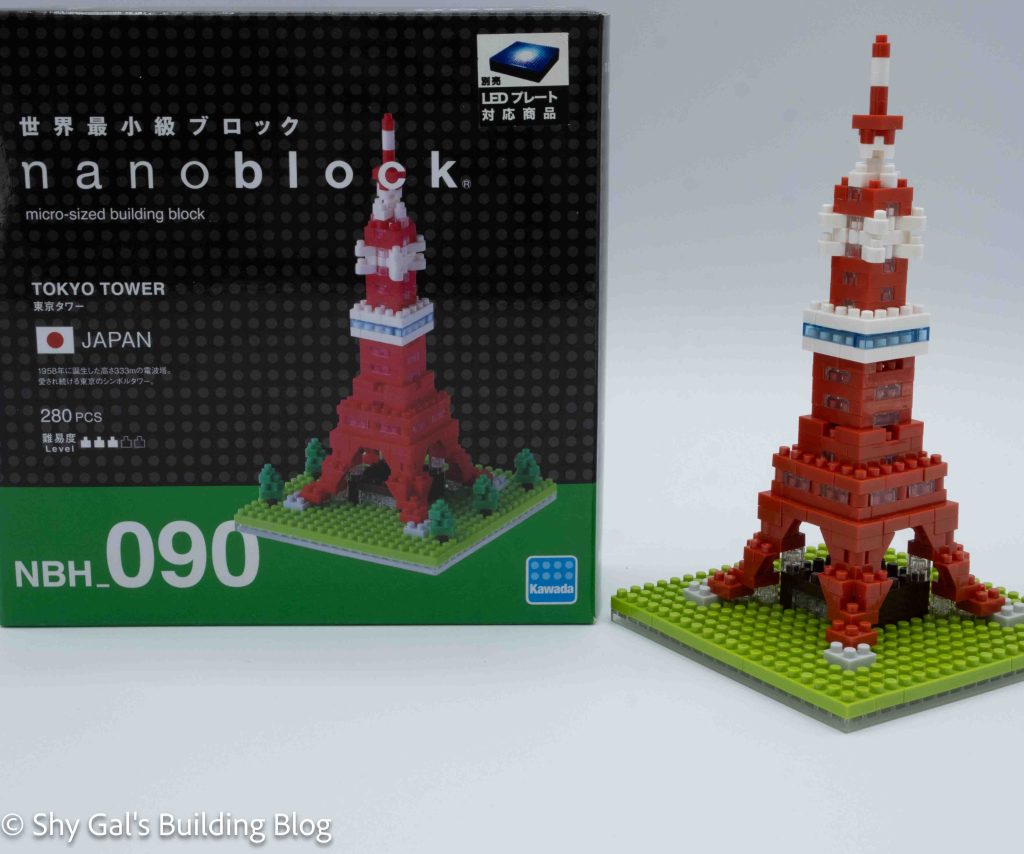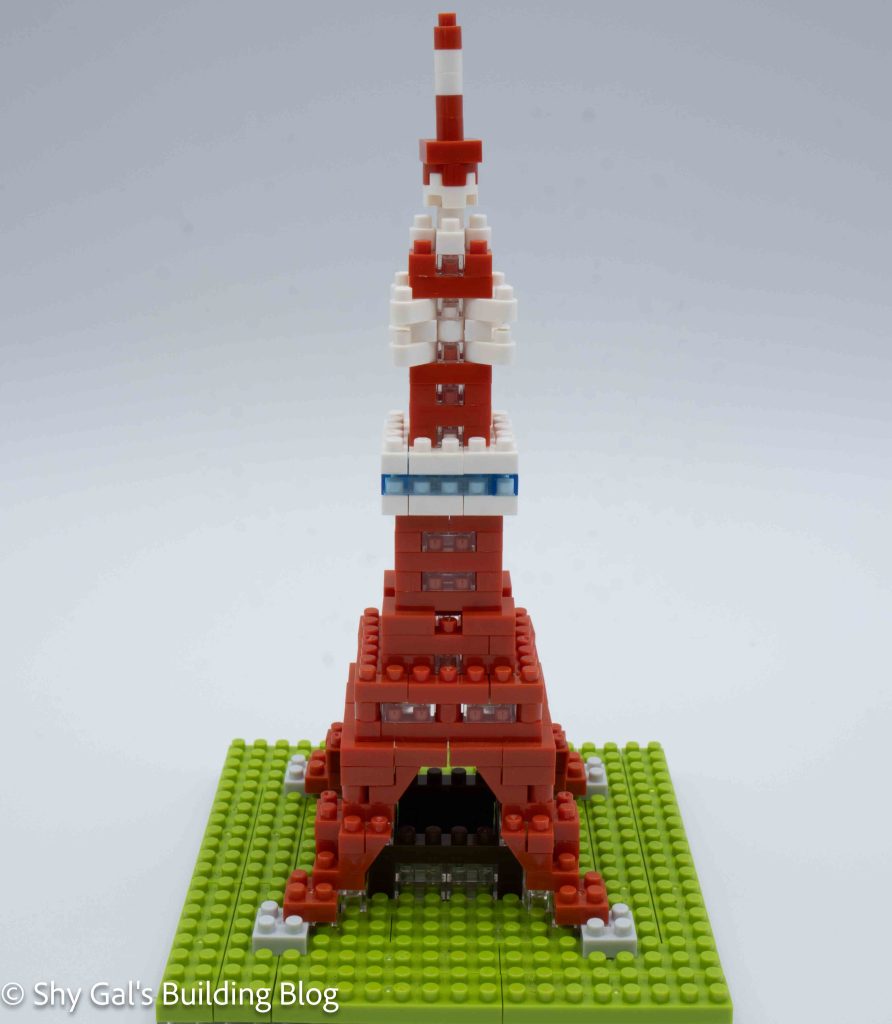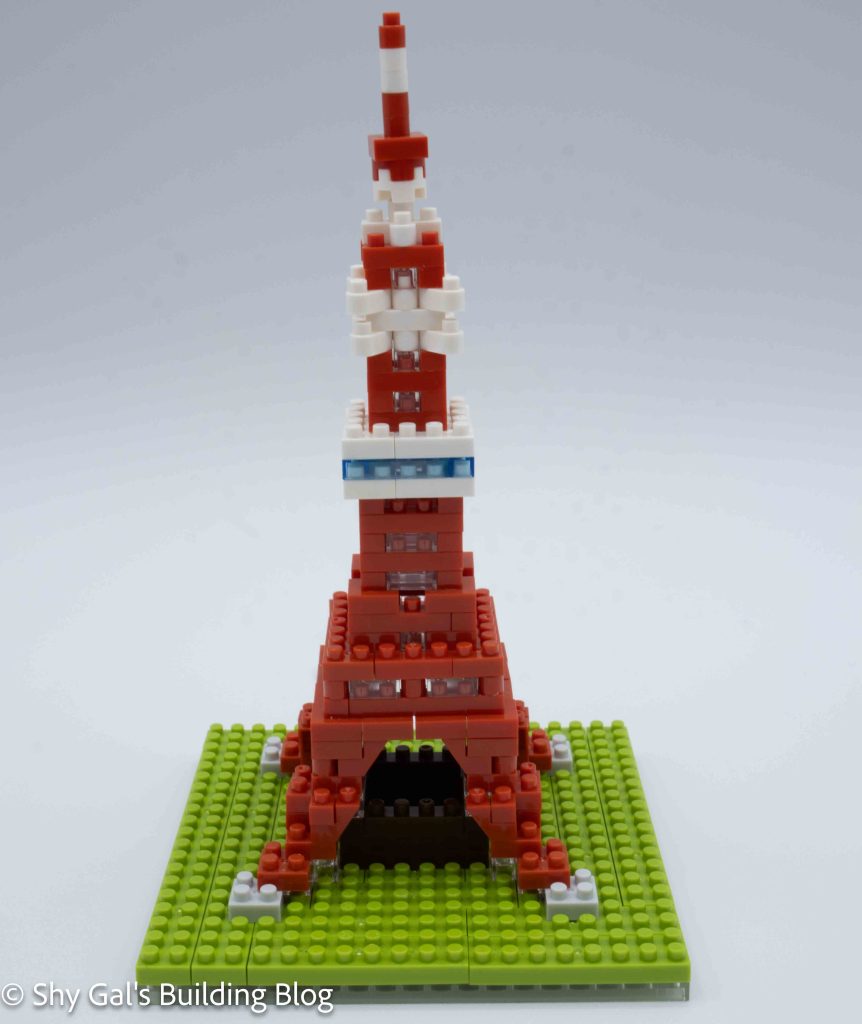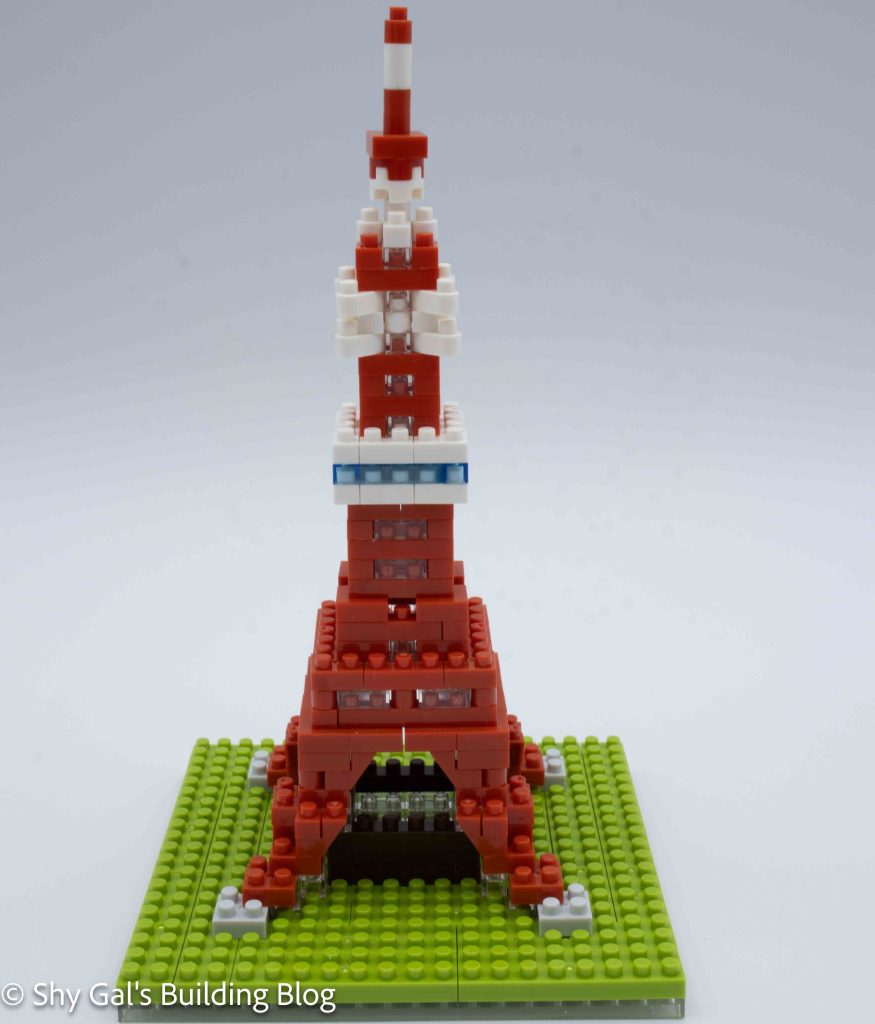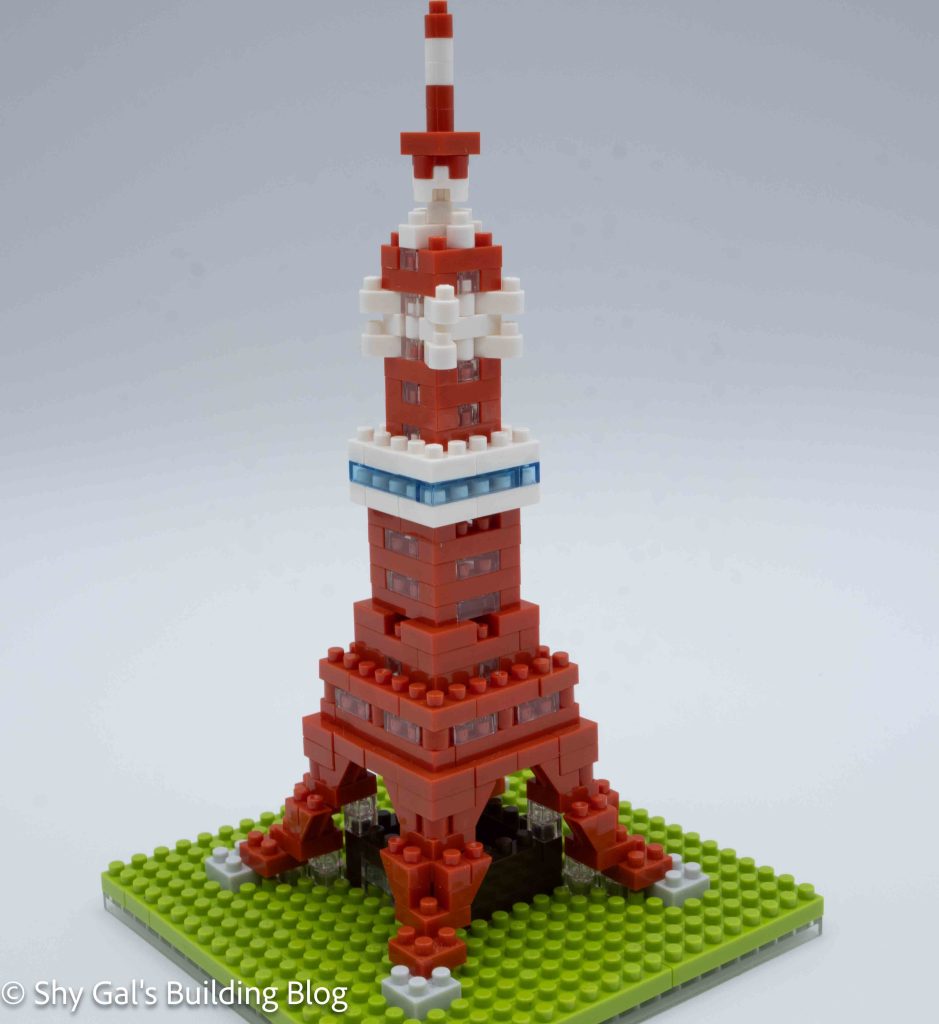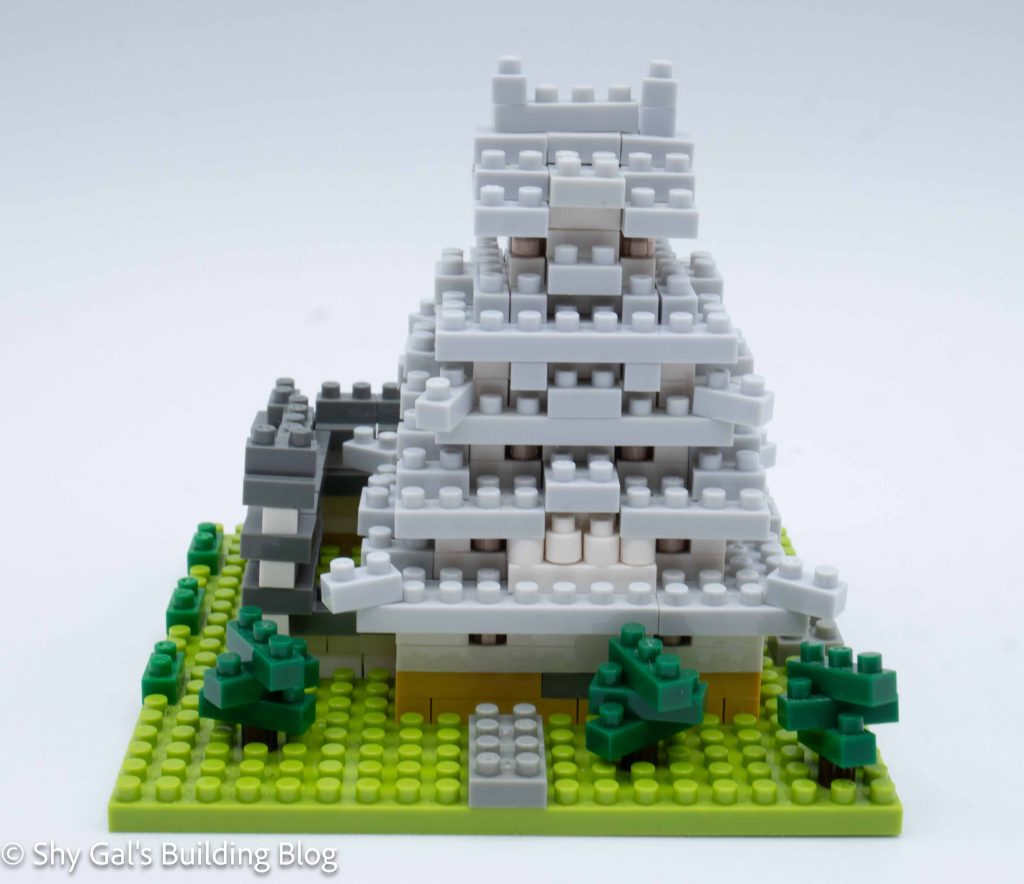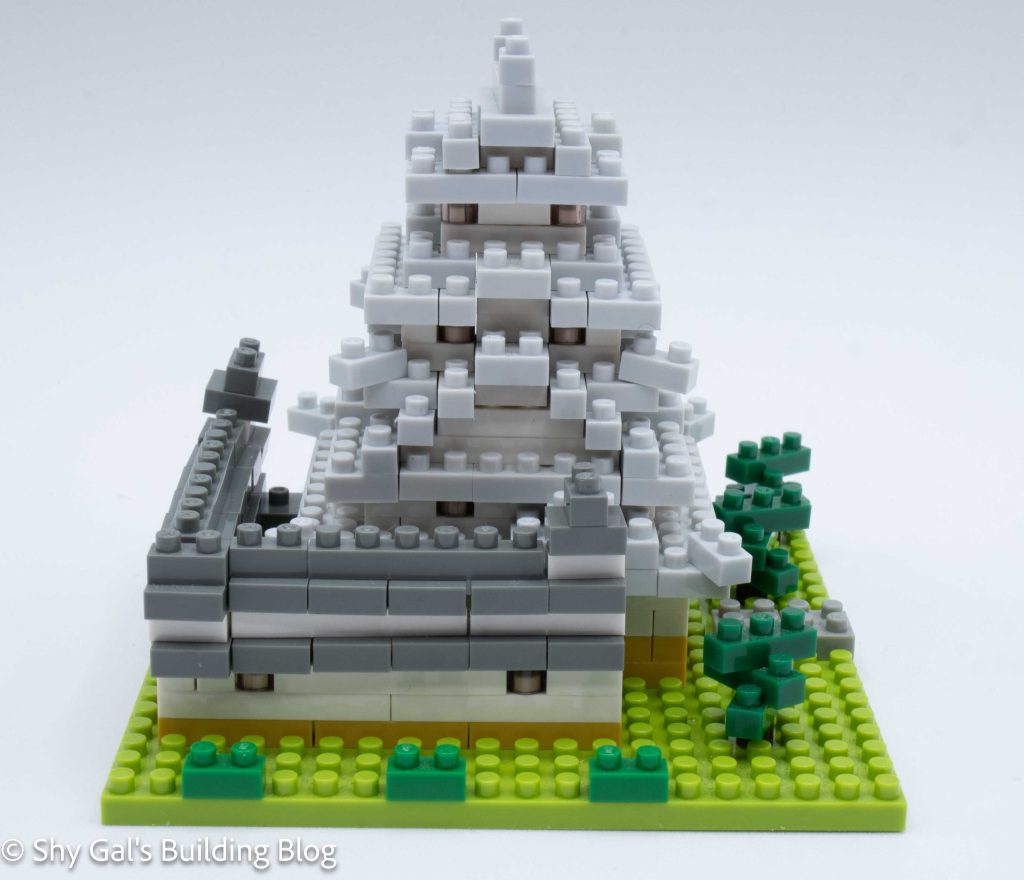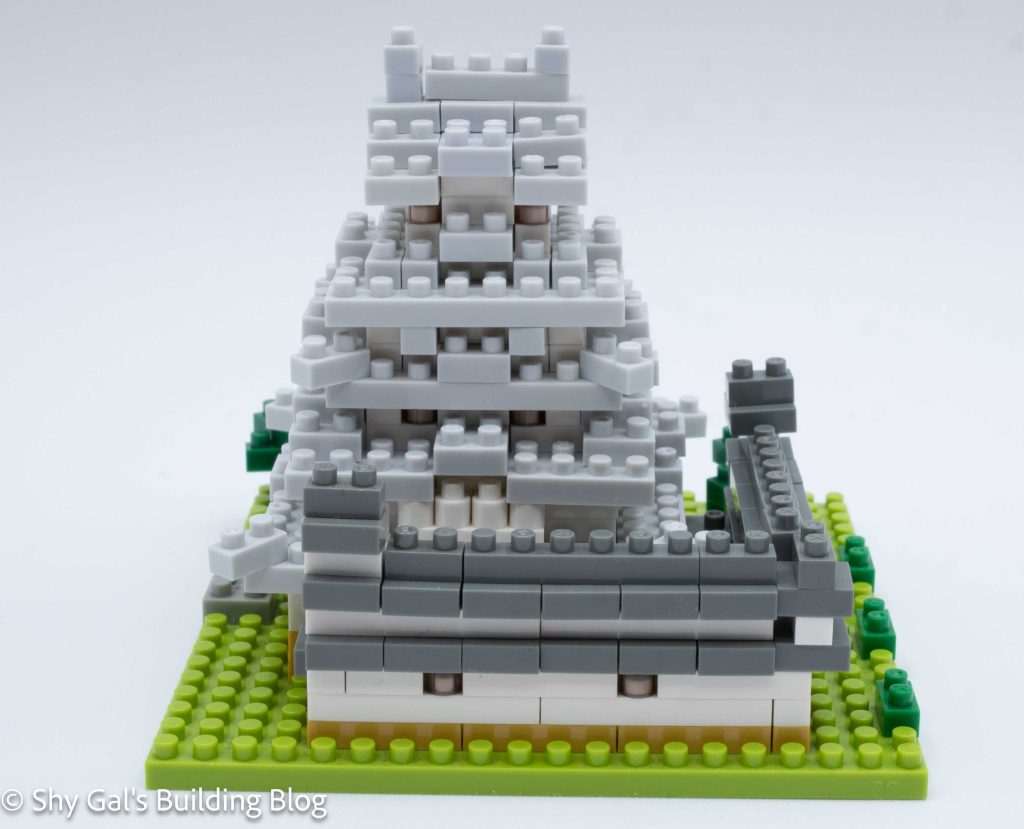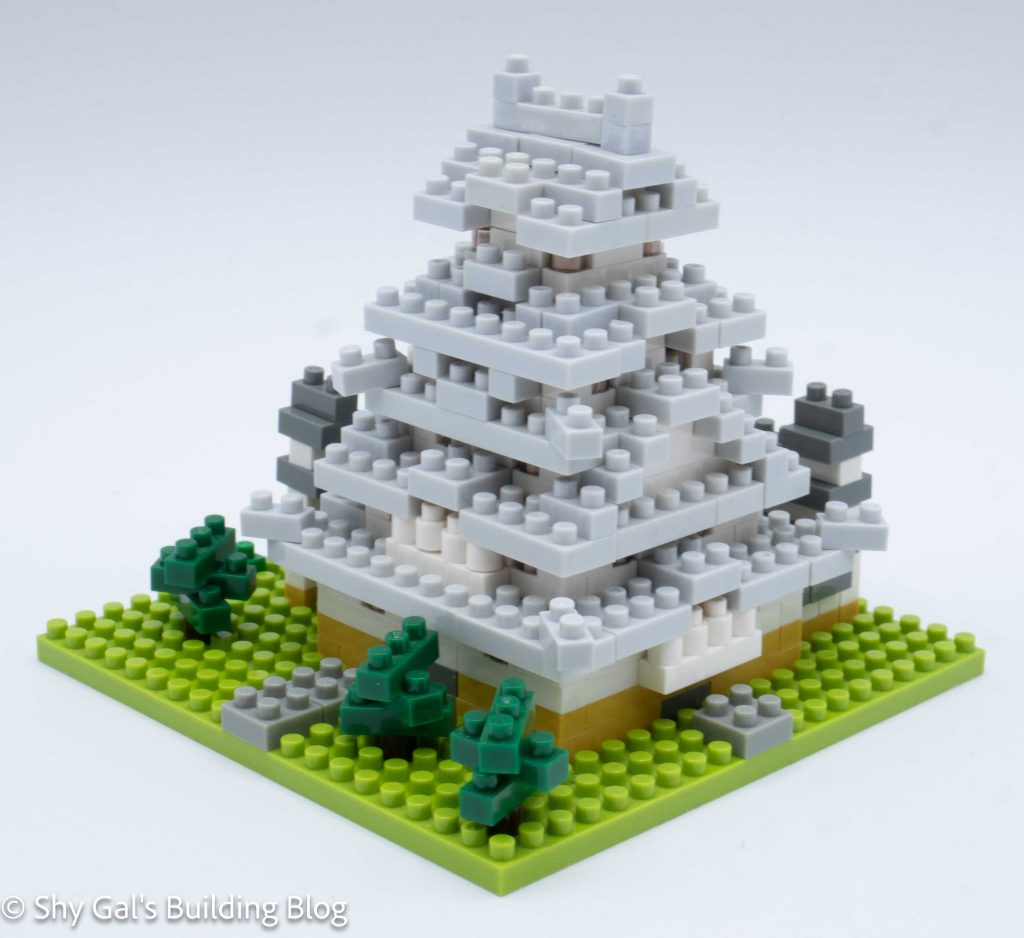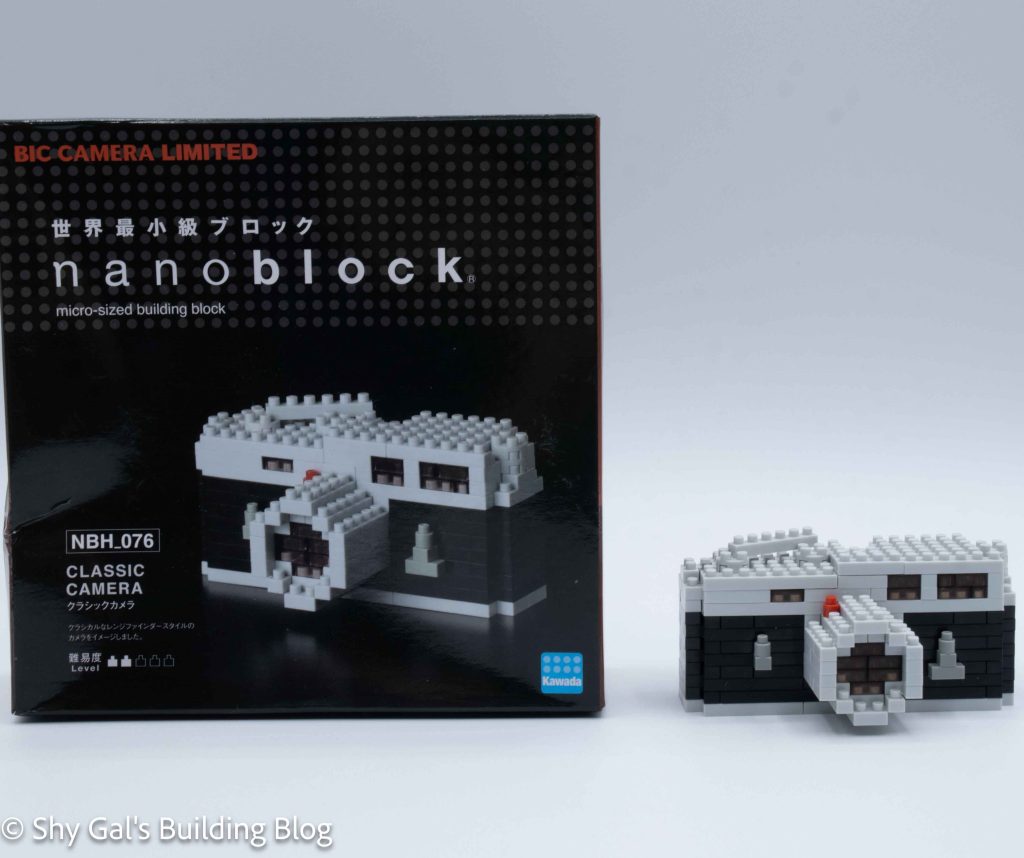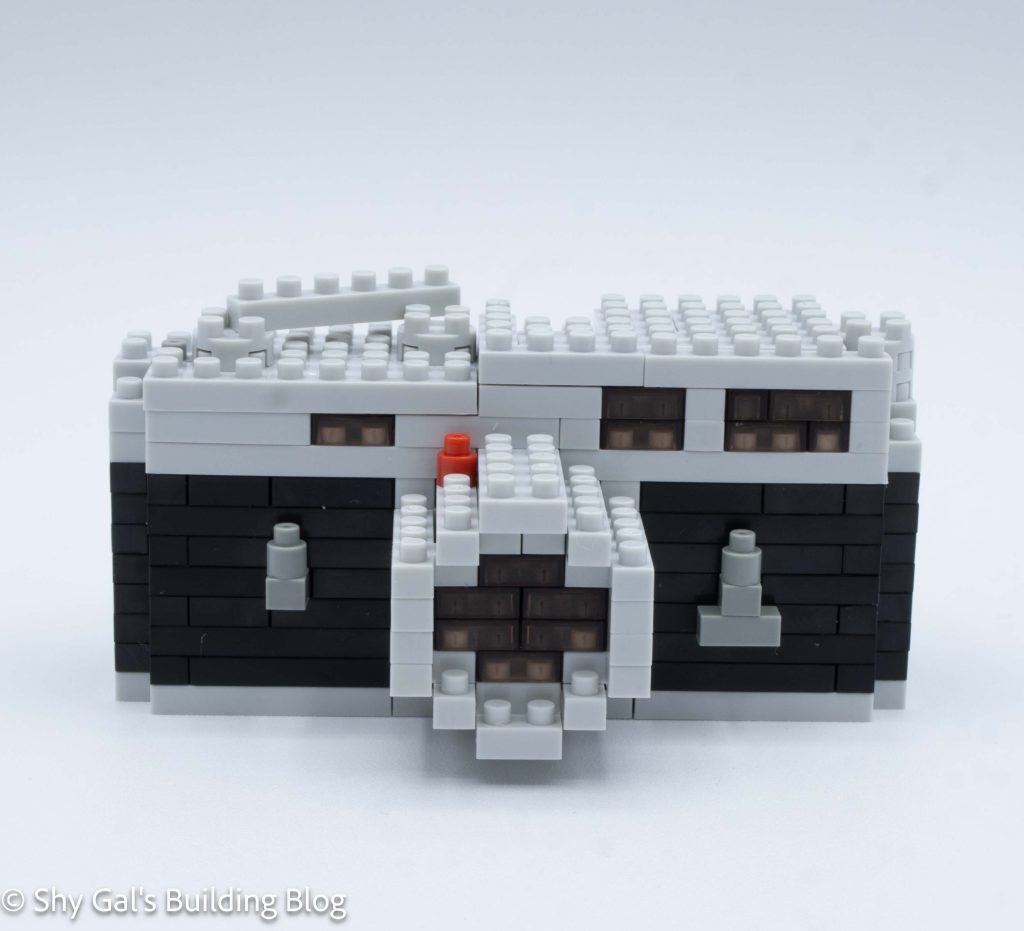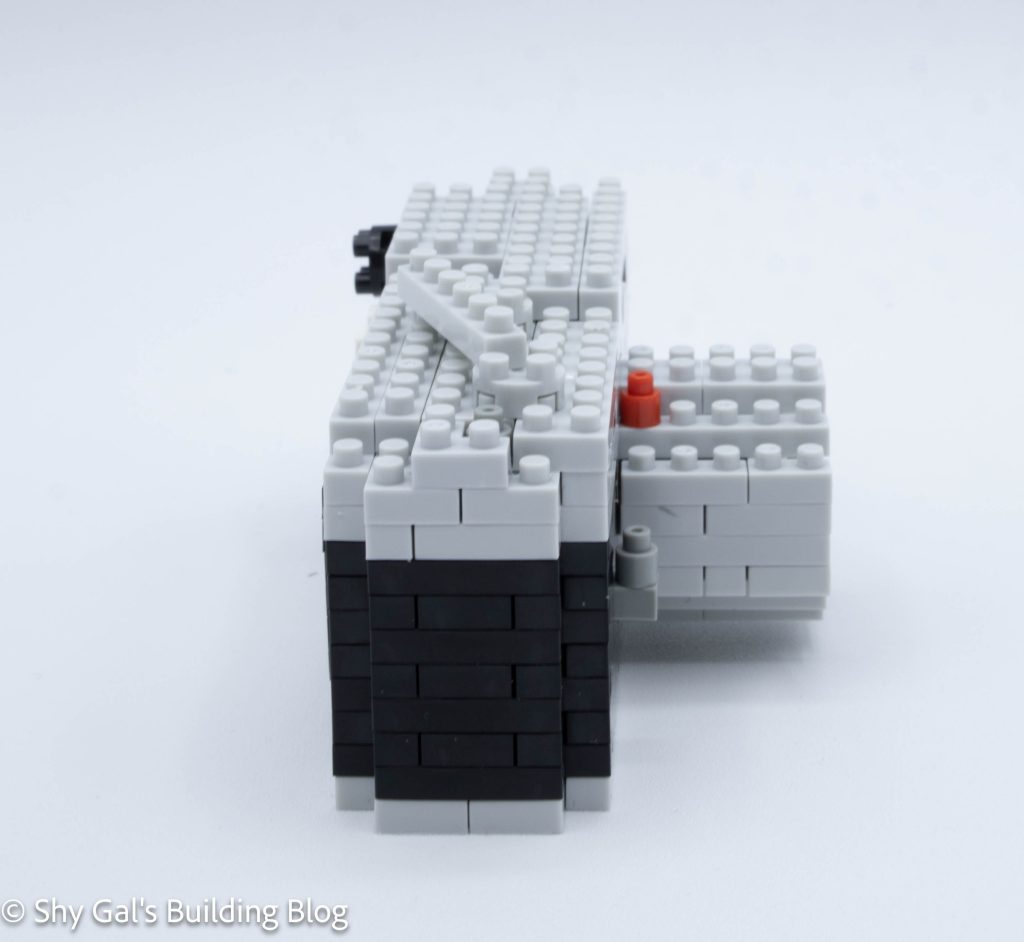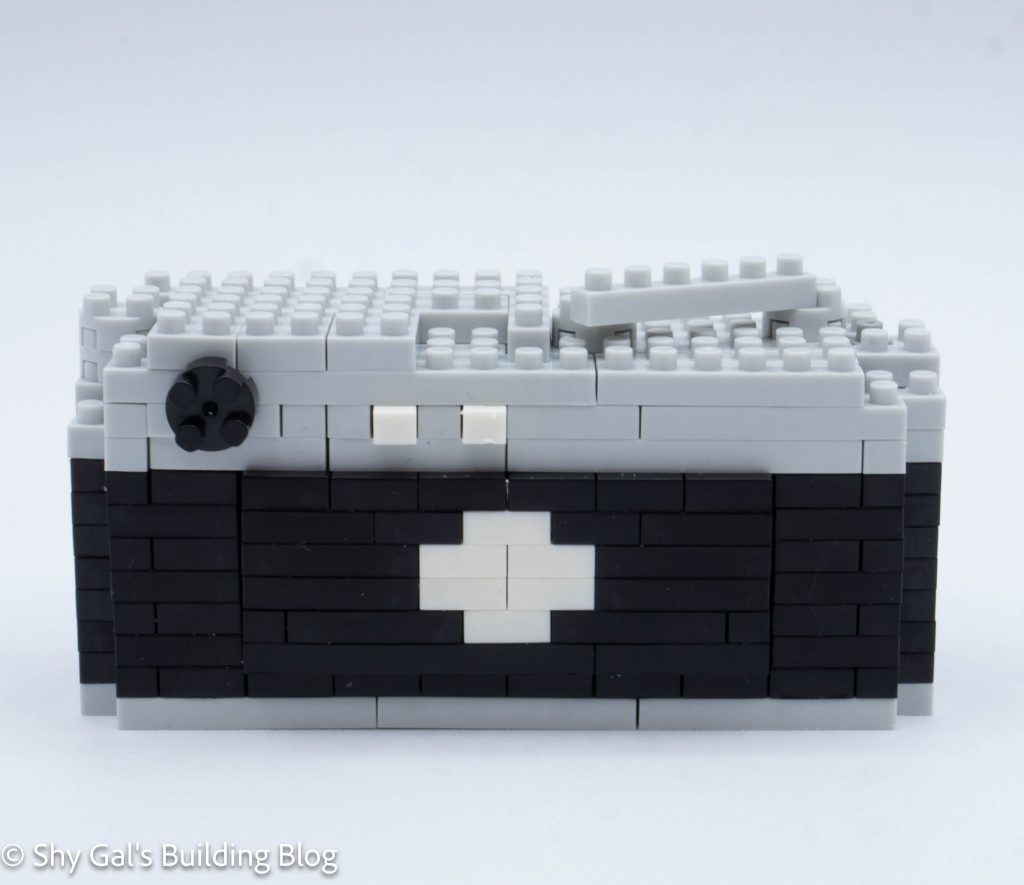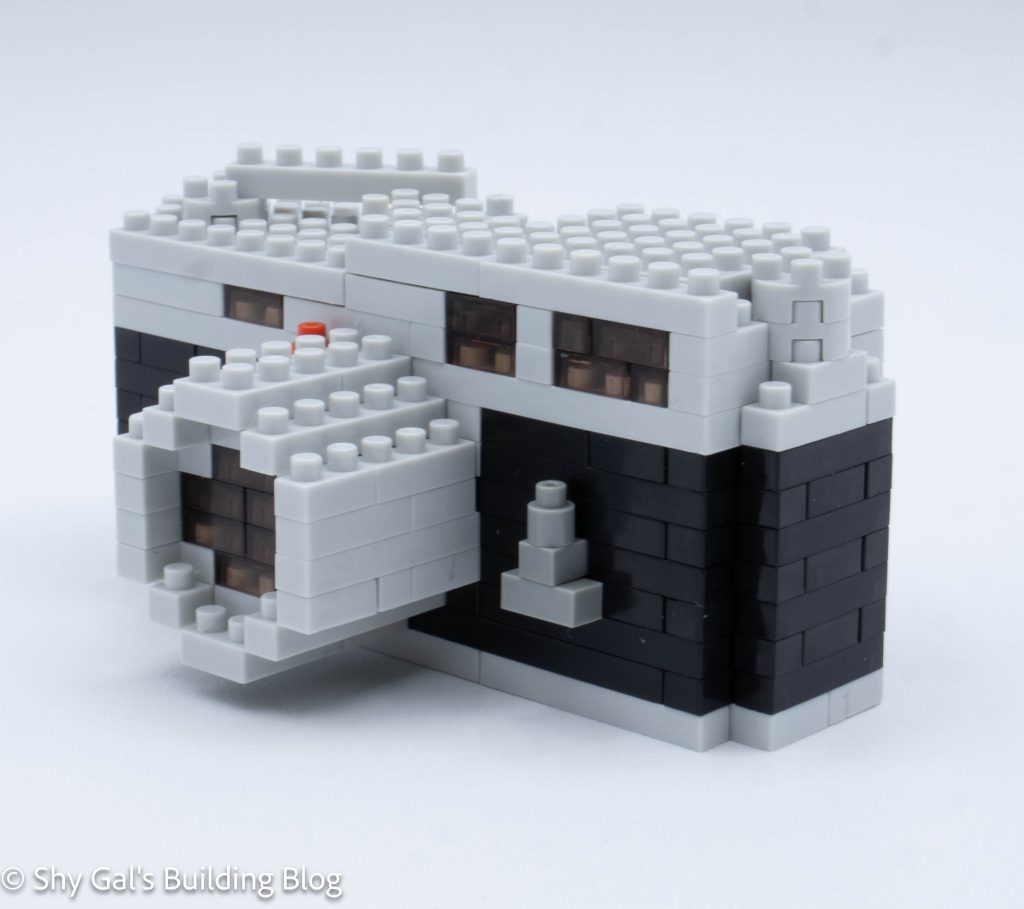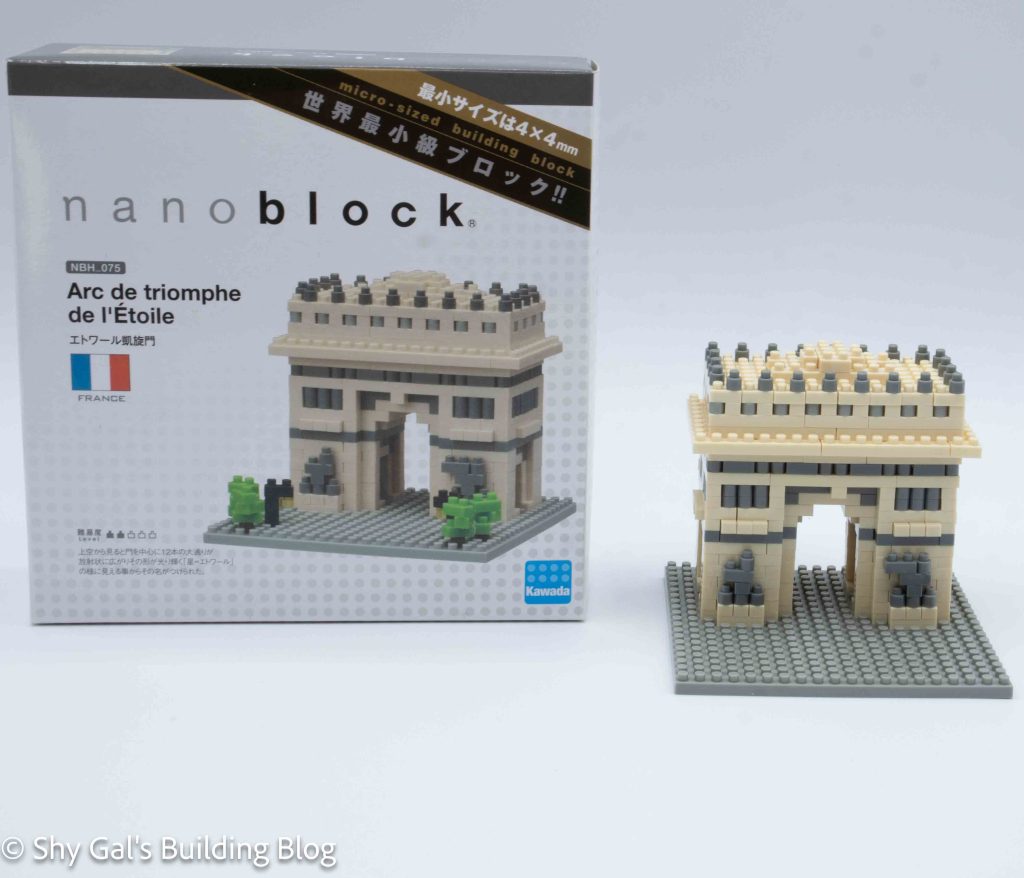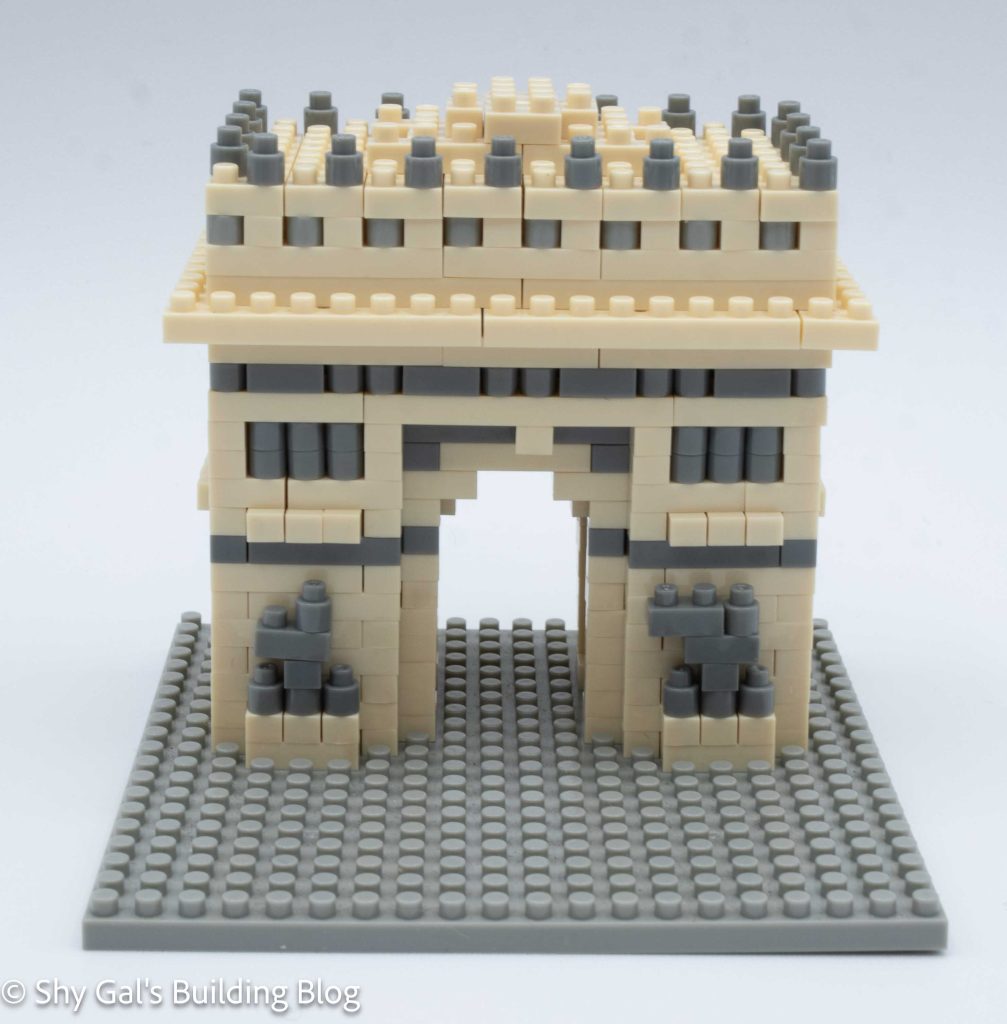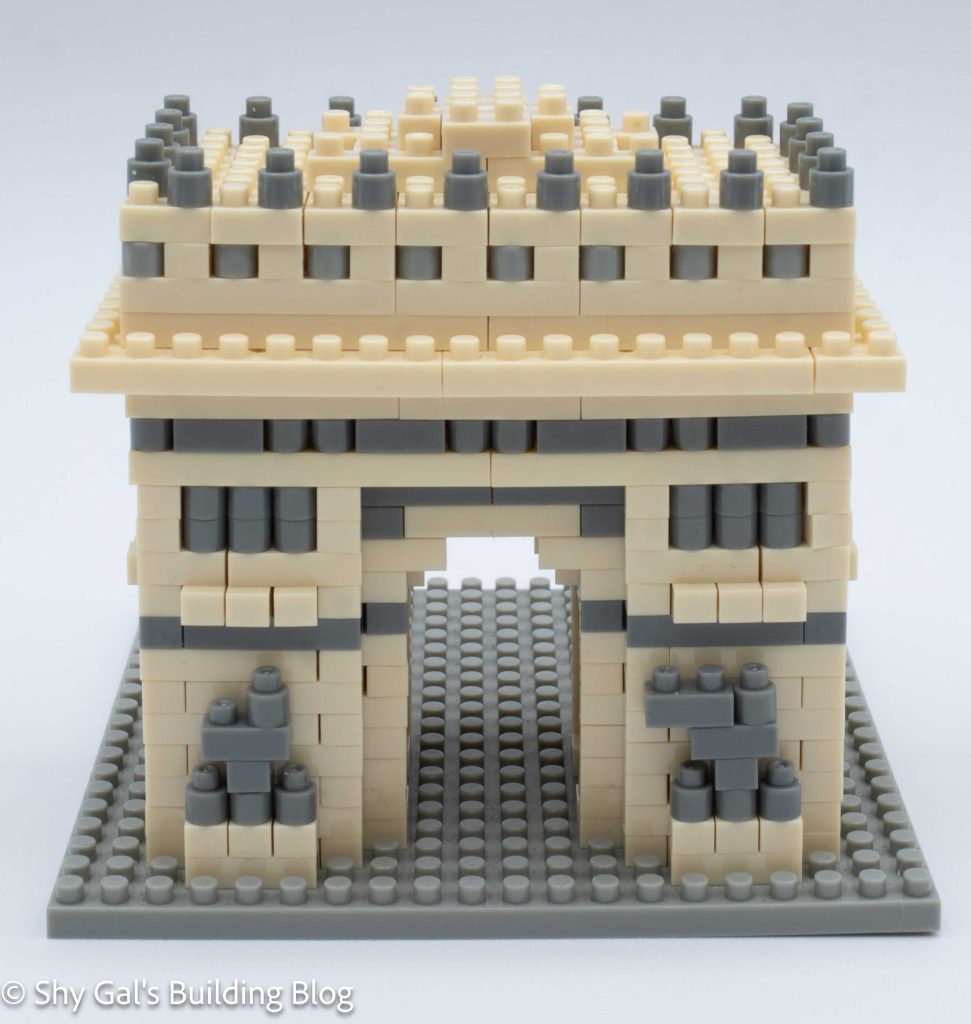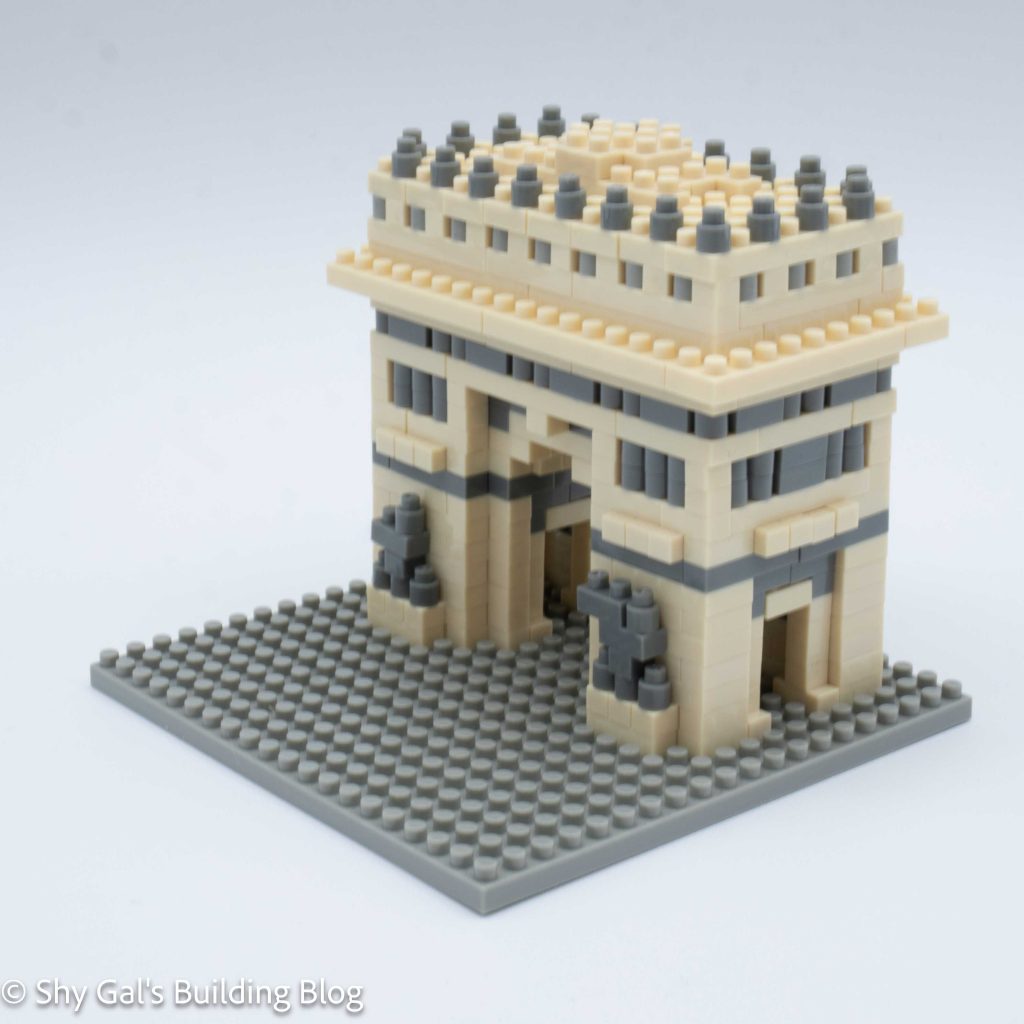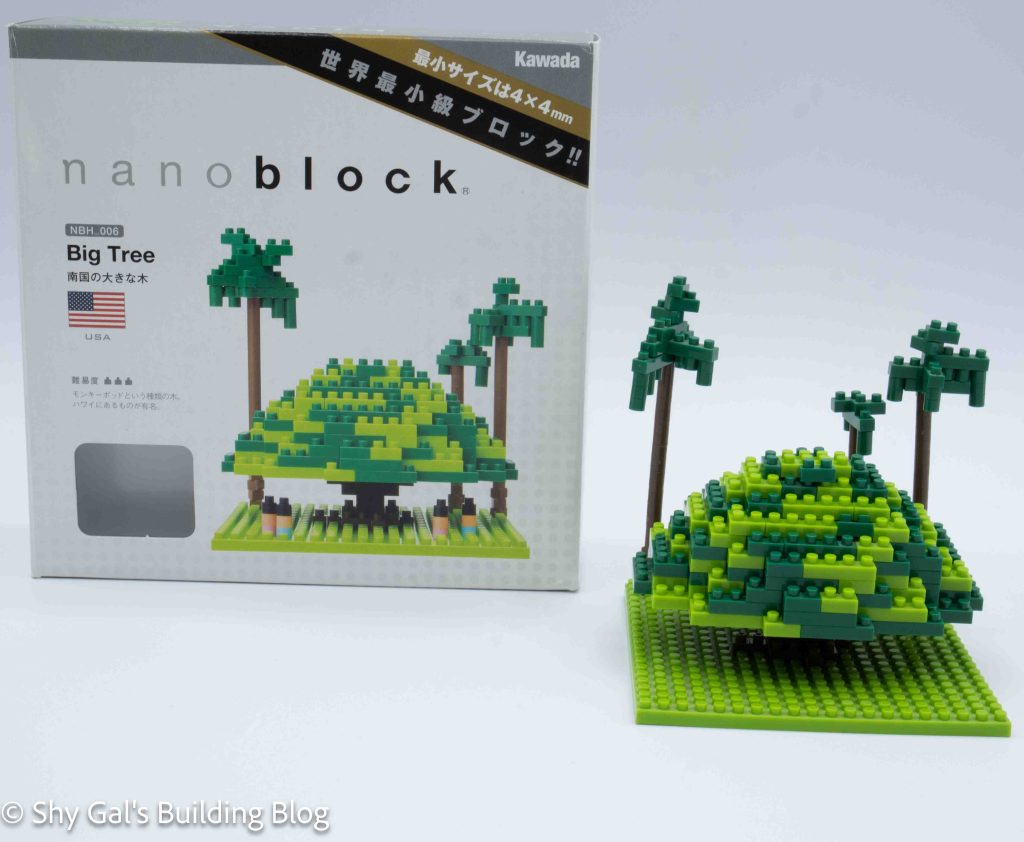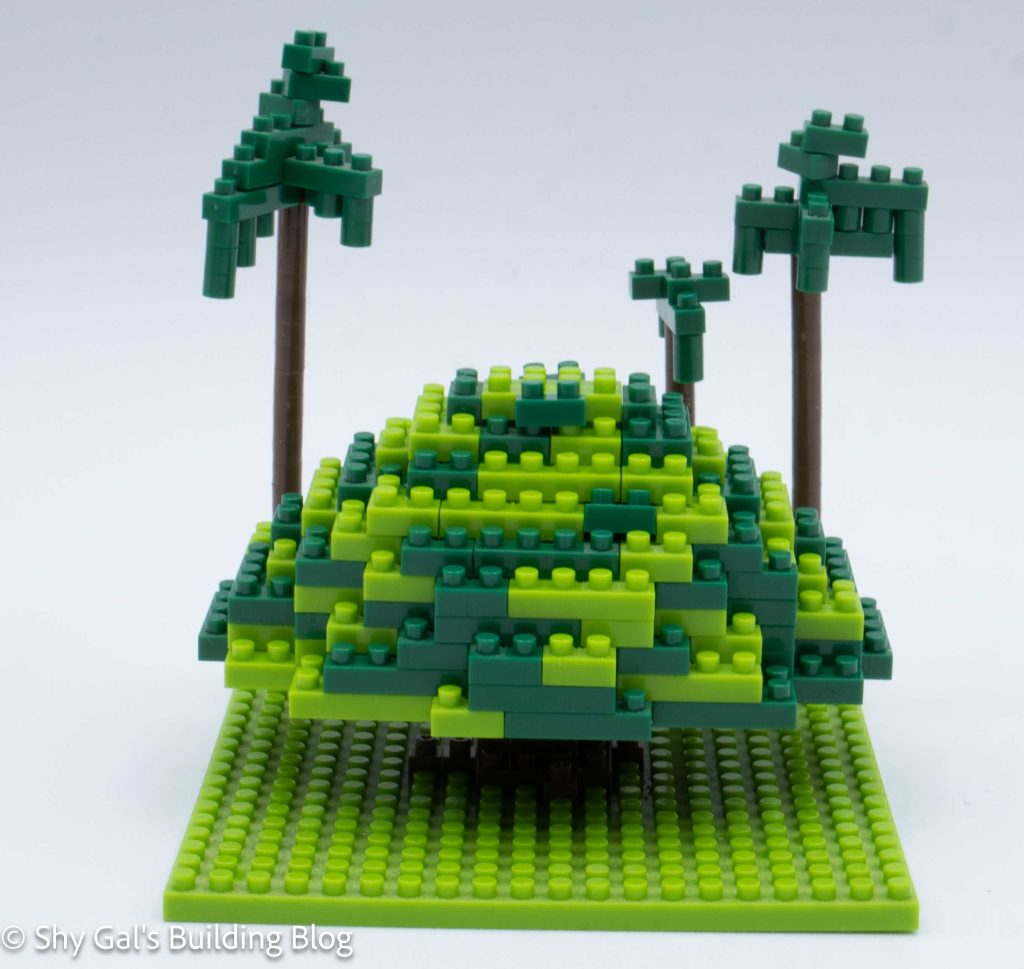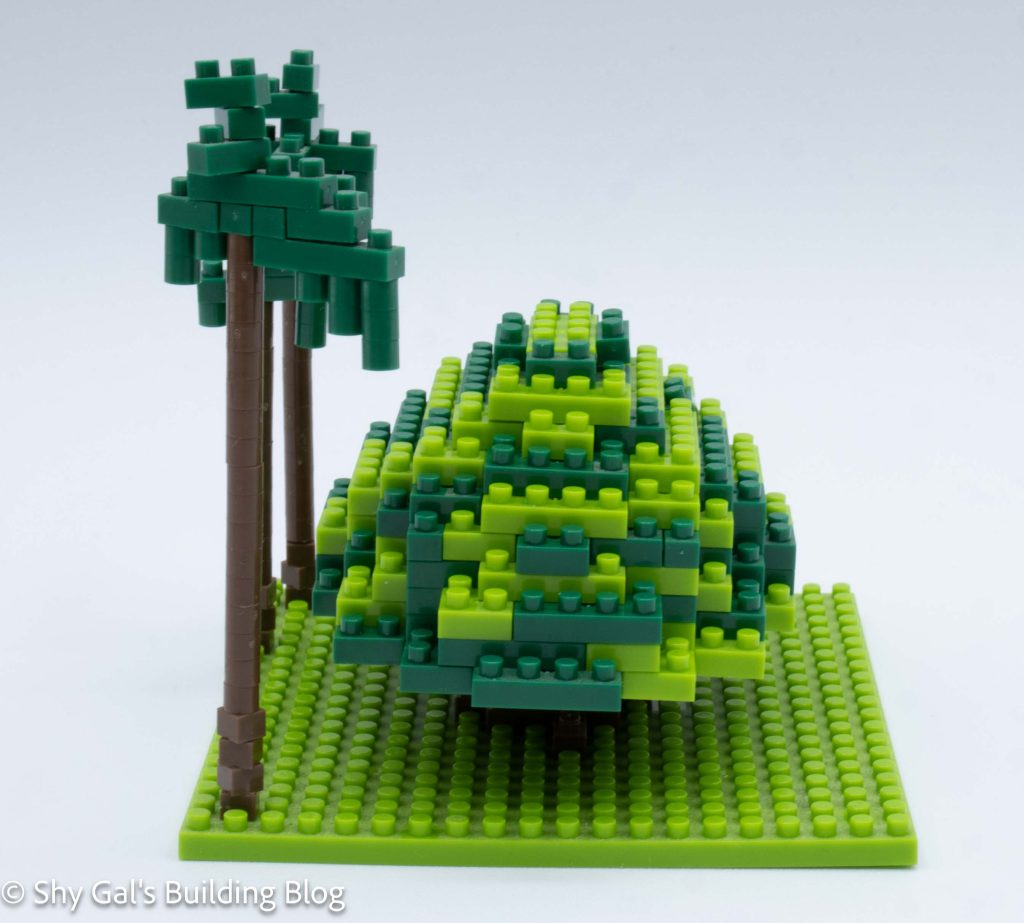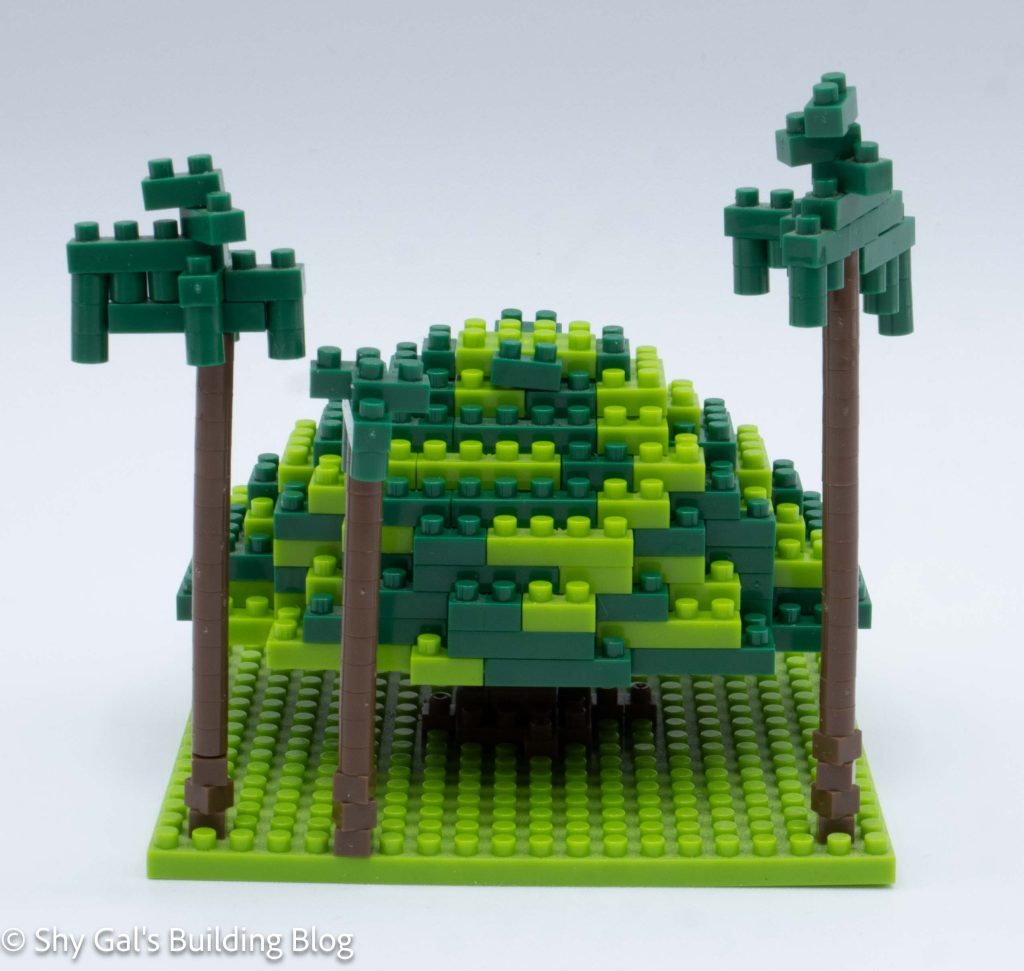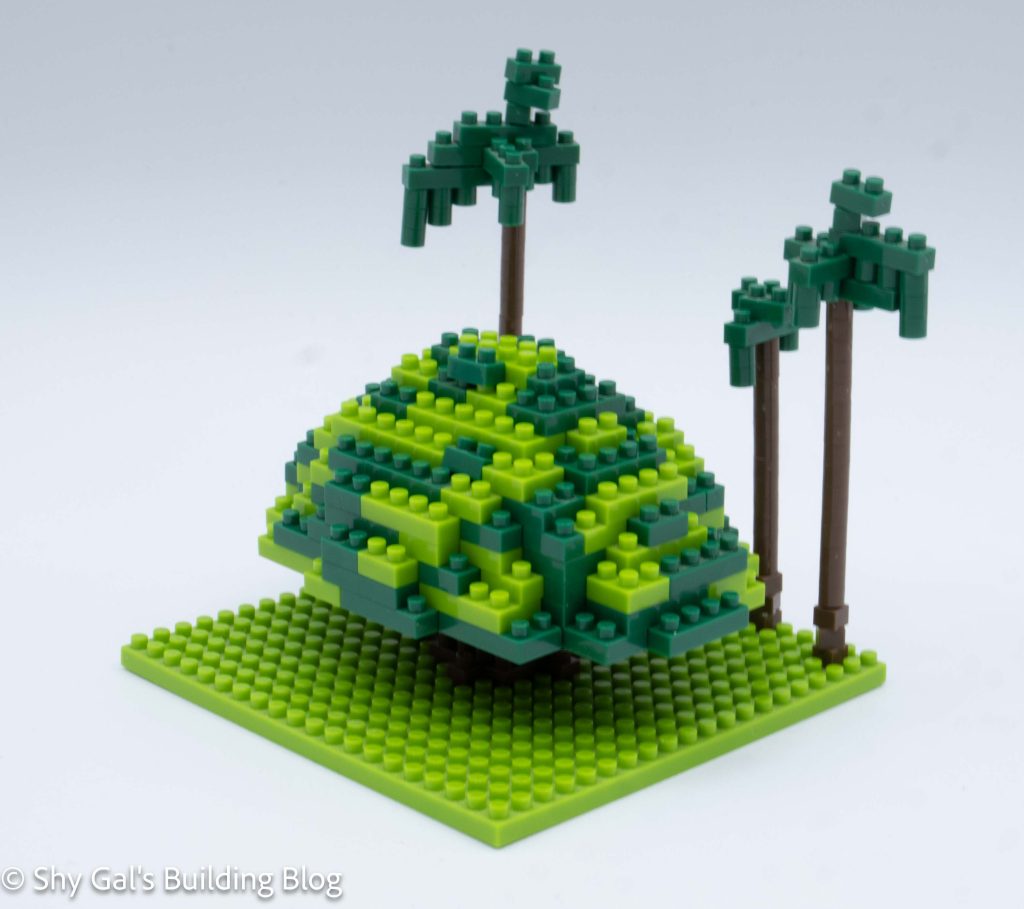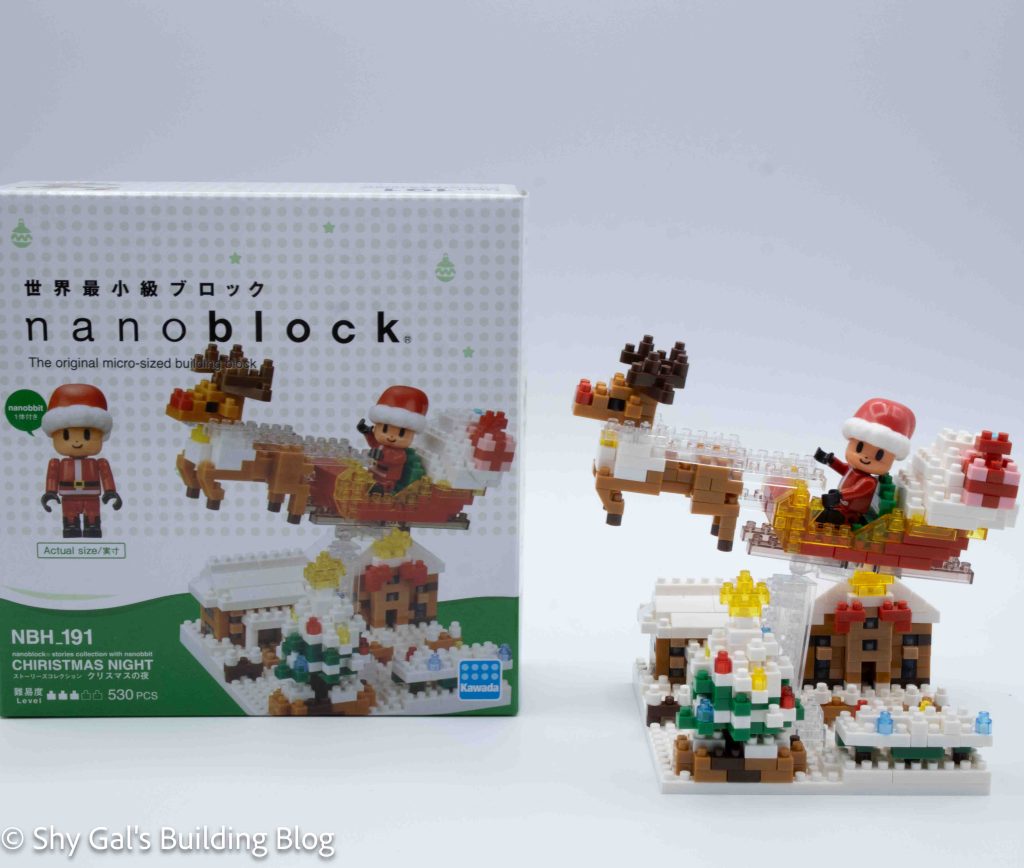
This post is a review of the nanoblock Christmas Night build. Christmas Night is part of the nanoblock Sights to See collection. Wondering what else is part of the Sights to See collection? Click here for a list.
Number: NBH_191
Number of Pieces: 530
Difficulty Rating: 3/5
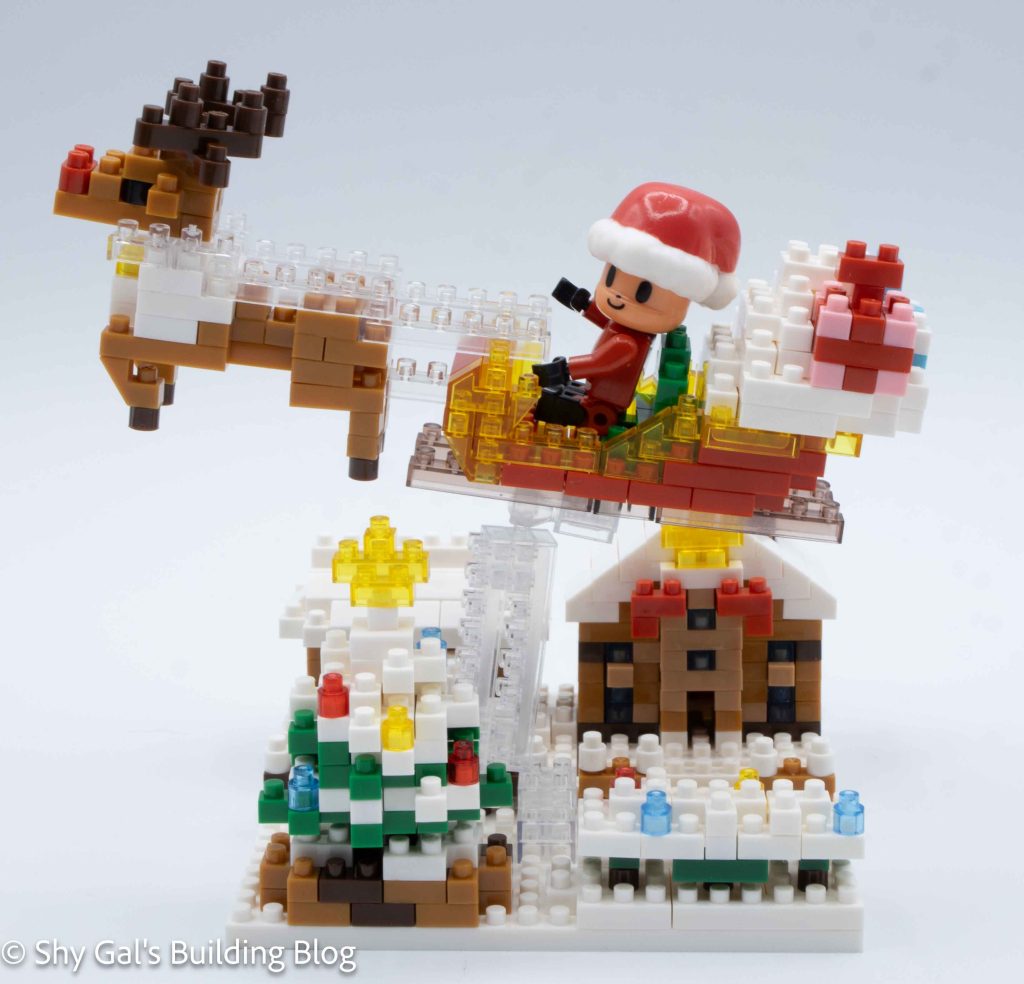
This kit is made up of several smaller sections that are all placed on the baseplate.
The first section is to build the house on the left. I bought this kit used so it was a bit difficult to tell where to use the tan vs the golden single bricks. I guess that the tan bricks were the more peachy-looking bricks on the instructions. Other than the coloring questions, this house was very straightforward.
The second section is the house on the right. Once again, I was guessing about the colors, but overall, the instructions were clear.
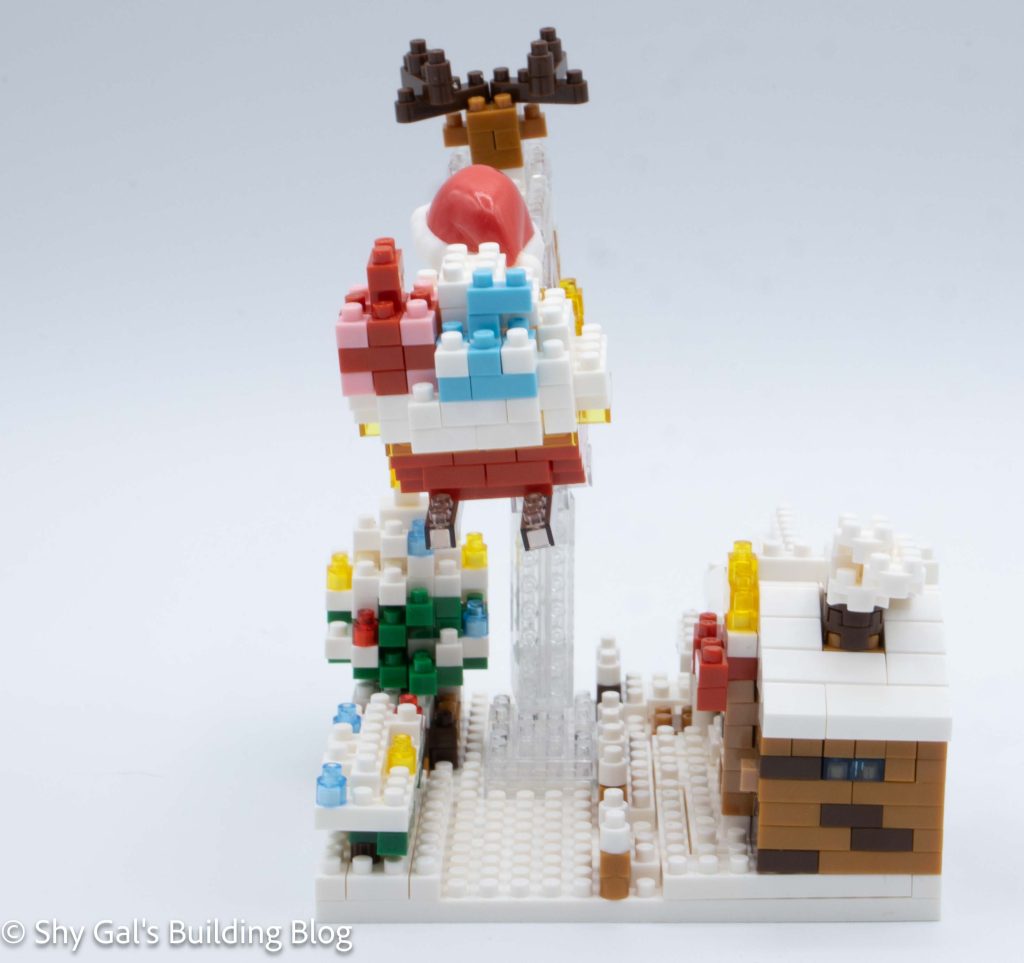
The next section is to lay out the base. This was a bit tricky because the photos were so small it was a bit tricky to keep track of where the bricks went. After laying out the fences, sections 1 and 2 were attached to the base.
Then, some trees and a plant pot were added to the base.
The next section is the sleigh. There were 2 problems with my sleigh. First, the base of my sleigh wasn’t very secure until I attached the runners at a much later step. Secondly, it looked to me like there was no gap between the seat and the presents, but when I built it, I had a gap.
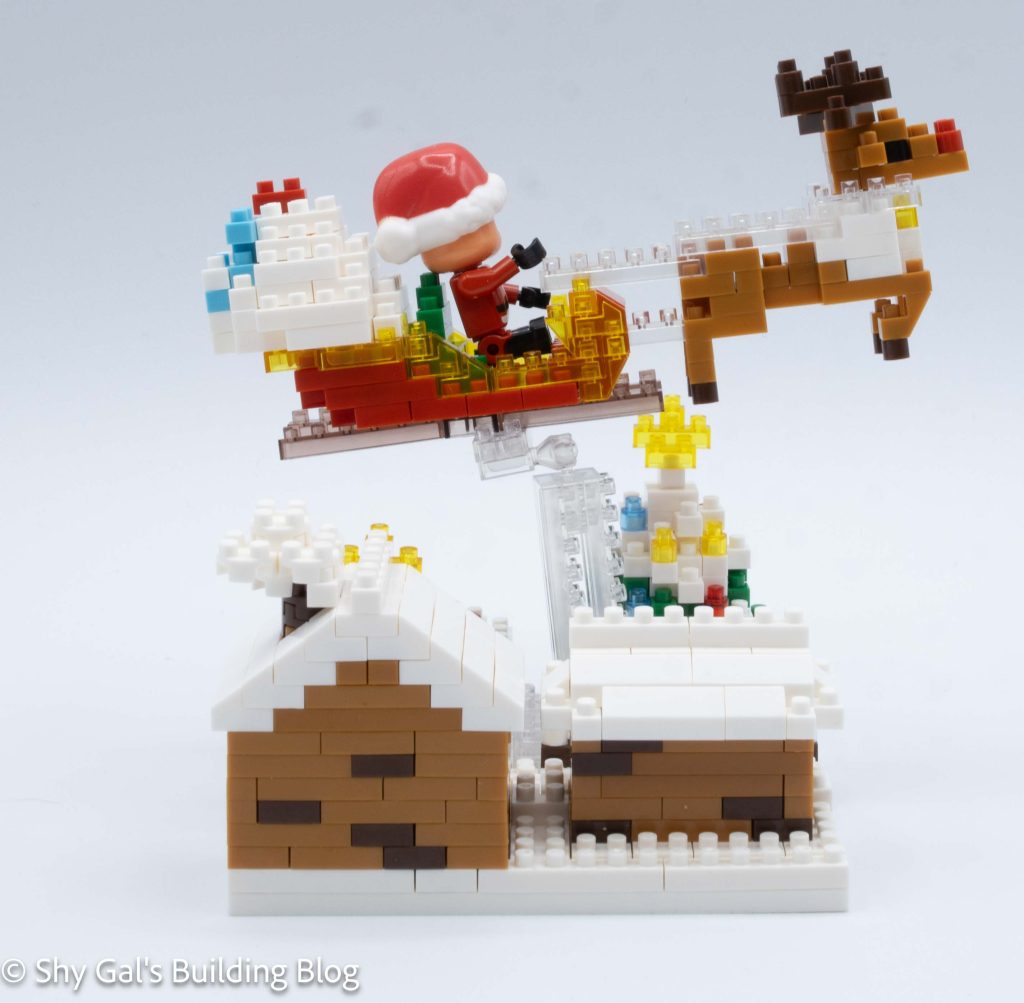
The next section was the reindeer. He was very clear overall, including when attached to the sleigh.
After building the reindeer and sleigh, the sleigh runners are finally added. The structure that holds up the sleigh is also added.
The last major section to build is the Christmas tree right out front.
This kit also came with a nanobbit dressed up as Santa. Since I bought the kit used it was already put together. He sits nicely in the sleigh but will fall out with any movement.
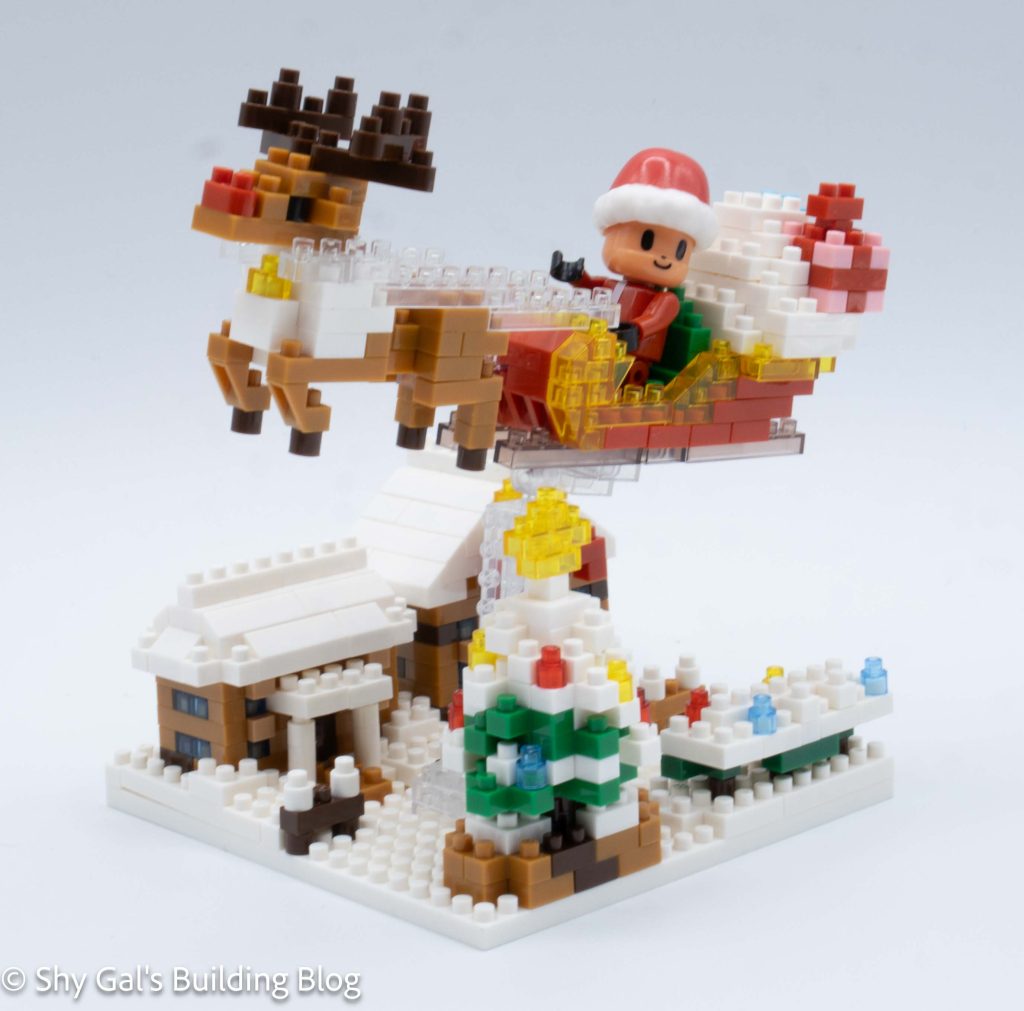
Things I liked:
- I really like the amount of height and the various heights throughout the build. I feel that it adds a lot
Things I didn’t like:
- I don’t love the combining of clear and solid bricks. I don’t feel that it adds a lot, nor do I think that so many bricks are clear is marked clearly in the instructions
